EXPLORE
The newly restored Grand Master’s Palace in Valletta p. 24
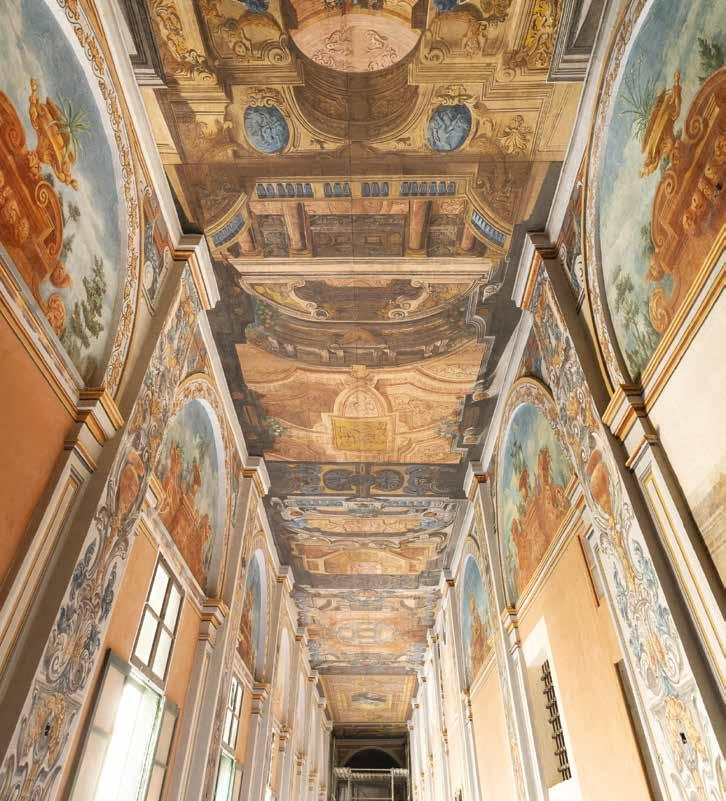

FOOD & DRINK
10 of the islands’ top fish and seafood eateries p. 45

ARTS & CULTURE
Artist Manuel Farrugia and his prestigious commissions p. 72
MALTA & GOZO SPRING/SUMMER 2024 | € 7.50
EXPERIENCE
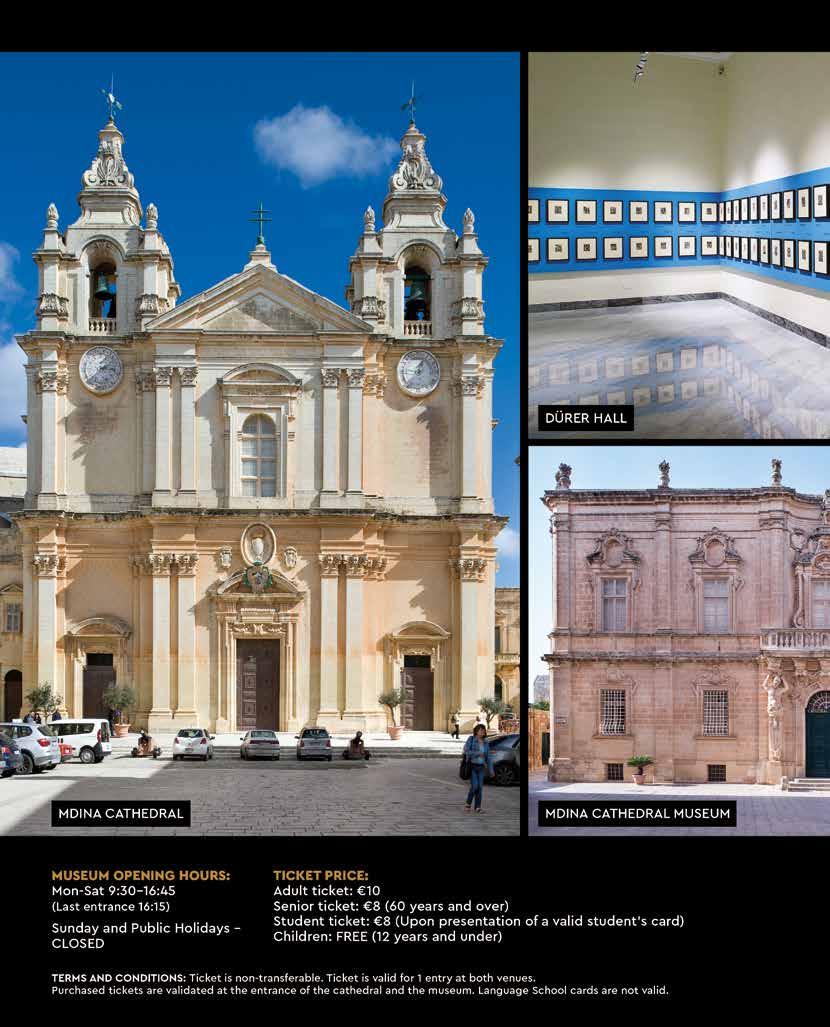




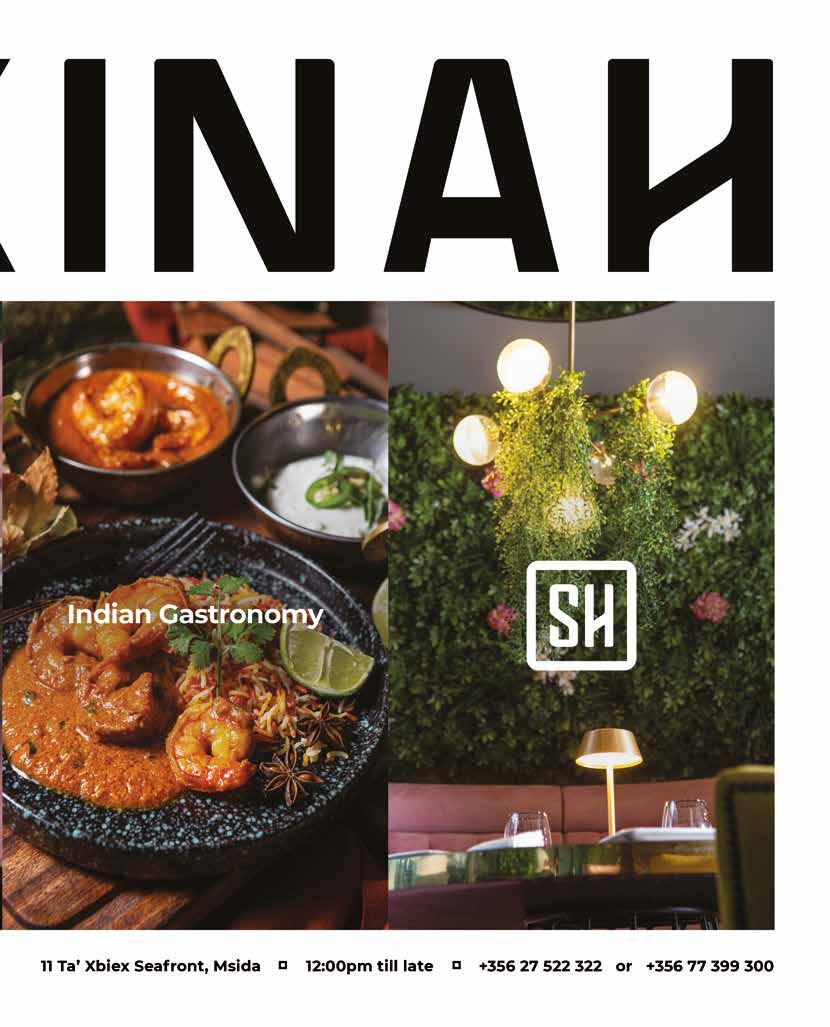


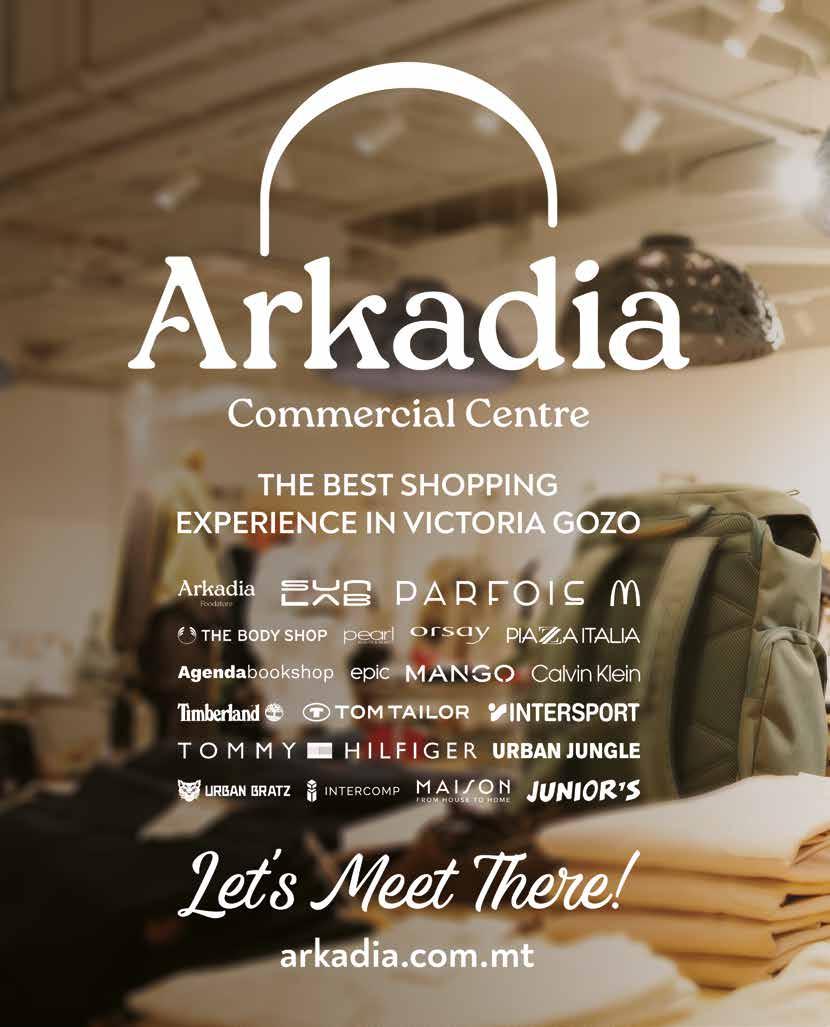
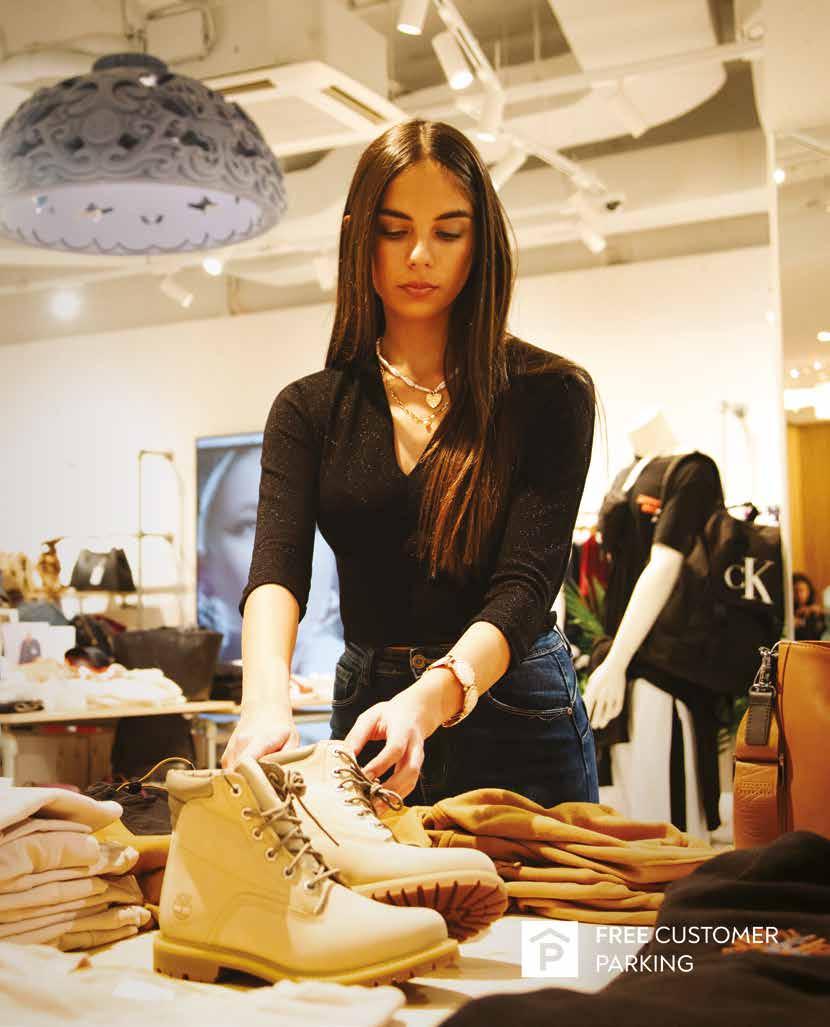

34
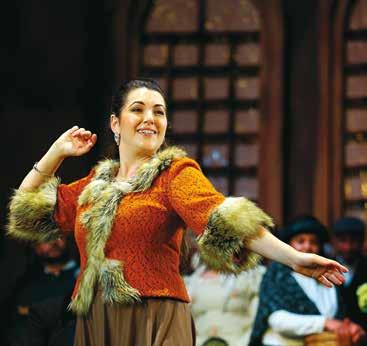

45 24
16.
Feast on spring’s finest: A local’s top 10 things to do in Malta right now
From cultural sites to picnic spots and top events, Rebecca Anastasi gives her rundown of the unforgettable experiences and adventures awaiting any visitor to the Maltese islands.
24.
Unveiling the restored Grand Master’s Palace
Following an extensive renovation project, the Grand Master’s Palace in Valletta is now reopened to the public. Senior Curator Emmanuel Magro Conti takes us on a tour to explain what lies within its walls.
34.
“Music is an obsession I’ve had since I was a child”
Soprano Nicola Said has trained in prestigious music programmes across the globe, and has performed both locally and overseas. In between her busy schedule she made time to meet us to share her passions and drives, as well as her favourite things about her beloved Maltese islands.
40.
A decade of transforming people’s lives through dance
As Malta’s first national dance company, ŻfinMalta, celebrates its tenth anniversary, Prabjit Chohan-Patel sheds light on its journey and on what the future has in store.
012
CONTENTS
Nicola Said as Musetta in La Bohème at Teatru tal-Opra Aurora.
Photo: Christine J. Muscat-Azzopardi
Photo: Heritage Malta
The Seafood Market Grill by Adam.
Photo: Joel Gueller Photography
Seafood sensations:
10 must-try dining destinations
Edward Bonello scours the islands to compile his top 10 list of fish and seafood eateries across Malta and Gozo.

ON THE COVER
Location: Grand Master’s Palace, Valletta
Photography: Heritage Malta
PUBLISHERS
Content House Group
ADVERTISING
Investing in Malta guide
An in-depth look at what it takes to set up a business in Malta, the new and emerging economic sectors attracting local and international investment, and why the islands are considered a business and financial services hub in Europe.
Brand Sales Manager Wanaha Camilleri
Operations & Client Relationship Manager Sue Ann Pisani
Administration & Client Relationship Executive Rodianne Sammut
ART DIRECTION & DESIGN
Nicholas Cutajar
EDITORIAL CONTRIBUTORS
Rebecca Anastasi, Edward Bonello, Prabjit Chohan-Patel, Dean Muscat
The hottest new styles of the season – peach, big bags and short shorts!
Rebecca Anastasi gets the lowdown on this spring season’s sizzling trends and style advice with fashion dynamos Caroline Paris, Malcolm Gauci and Carina Camilleri
To follow your art
Dean Muscat meets Gozitan artist
Manuel Farrugia, tracing his journey from humble beginnings to prestigious commissions for notable churches and prominent figures. 72.
Content House Group, Mallia Buildings, 3, Level 2, Triq in-Negozju, Zone 3, Central Business District Birkirkara CBD 3010 T: +356 2132 0713
E: info@contenthouse.com.mt W: www.contenthouse.com.mt
Published since 2005, Guide Me is the largest and the leading independent guide for visitors in Malta and Gozo. This issue covers the Spring/early Summer 2024 period. Guide Me is distributed free of charge through leading hotels and from MTA offices across the Maltese islands. It is also sold at leading newsagents in Malta and Gozo, including those at the MIA and the Gozo Channel ferries.
Editorial opinions expressed in Guide Me are not necessarily those of Content House Group and the company does not accept responsibility for advertising content.
All rights reserved. Reproduction in whole or in part without written permission of the publishers is strictly prohibited.
013
45.
54.
63.

A JEWEL RESTORED
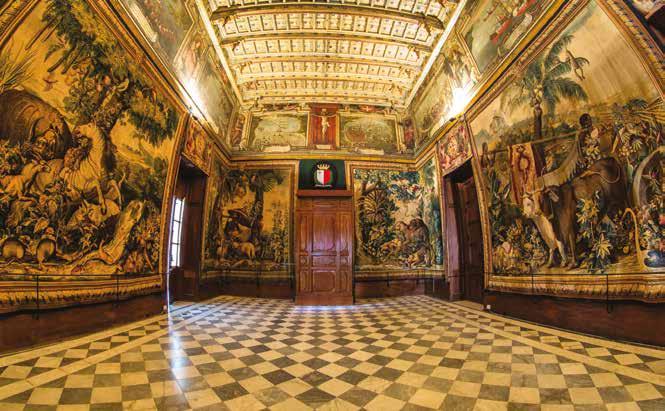
For enthusiasts of culture and history, the news of the reopening of Valletta’s Grand Master’s Palace this year was met with delight. Fondly known as ‘The Palace’, this architectural marvel, erected by the Knights of St John in 1571, commands attention at the heart of St George’s Square. However, it is the palace’s interior that truly dazzles, adorned with intricate architectural details, priceless artworks, exquisite furniture, breathtaking frescoes, a unique armour collection, and an array of other historical artefacts. Rebecca Anastasi embarked on a guided tour through the palace, led by Senior Curator, Emmanuel Magro Conti. Her firsthand exploration offers a captivating insight into the treasures concealed within the palace’s walls. For a closer look at Rebecca’s journey and a deeper dive into the grandeur of the Grand Master’s Palace, don’t miss the intriguing piece on page 24.
In this edition, we’ve also compiled our top 10 things to do, designed to enhance your visit and ensure you make the most of your time in Malta and Gozo (see page 16 for the full article). Our selection caters to a diverse range of tastes and interests, offering suggestions for must-see attractions, unforgettable shows, prime picnic spots, and more.
For those with a penchant for culinary delights, Edward Bonello has traversed the islands to curate his list of the top 10 fish and seafood eateries across Malta and Gozo. Delving into each establishment, he highlights the distinctive features and recommends the standout dishes that you simply cannot afford to miss.
Returning to the cultural realm, in this edition of Guide Me, we’re spotlighting two remarkable artists. First up is soprano Nicola Said (refer to page 34). Recently, she captivated audiences with her portrayal of Musetta in Puccini’s La Bohème at the Teatru Aurora in Gozo. We had the pleasure of sitting down with her postperformance to delve into her journey, upcoming projects, and her fondness for the island.
In a separate feature, we introduce talented Gozitan artist Manuel Farrugia. Known for his work adorning prominent churches across Malta and Gozo, he’s also sought after for his striking portraits of notable figures. For an in-depth look into one of Malta’s brightest artistic talents, turn to page 72.
With these stories and more, we trust you’ll enjoy this edition of Guide Me.
015
EDITORIAL
Grand Master’s Palace, Valletta.
Photo: Heritage Malta
THINGS
TO DO
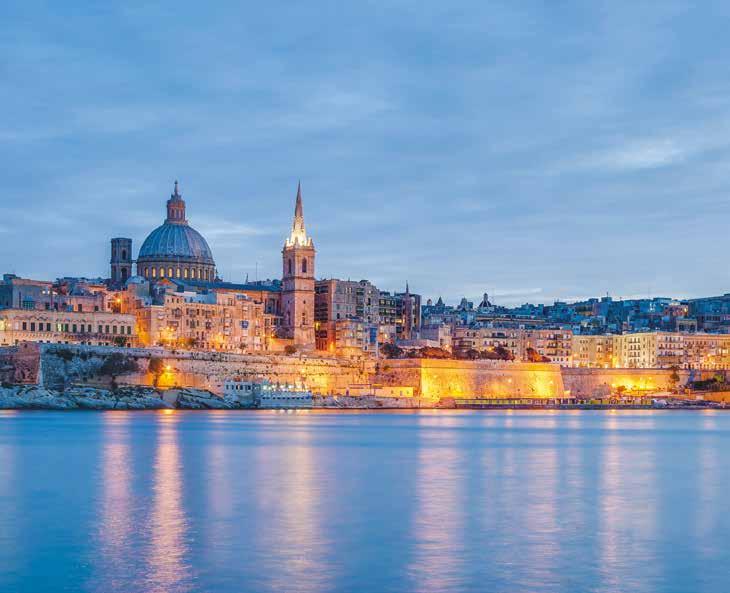
FEAST ON SPRING’S FINEST: A LOCAL’S TOP 10 THINGS TO DO IN MALTA RIGHT NOW
REBECCA ANASTASI gives her rundown of the unforgettable experiences and irresistible adventures awaiting any visitor to the Maltese islands. Just don’t forget the sunblock.
1.
GET YOUR (OVER)DOSE OF CULTURE
Whether you’re a frequent traveller to Malta or a first-timer, Valletta is a must on your itinerary. Malta’s capital is teeming with cultural sites, historical nooks and crannies, and hidden stories, so it’s definitely a great place to start on any trip to the islands. St John’s Co-Cathedral should be at the top of everyone’s list, not least because it is the home of Caravaggio’s magnificent The Beheading of St John the Baptist. The painting, completed in 1608, hangs in the Co-Cathedral Oratory, where the artist (full name: Michelangelo Merisi) had always planned to have it on display. As a result, its chiaroscuro rendering of the gory scene feels Tarantino-esque, as St John’s head is pushed firmly into the ground, his executioner looming over him, and heralding his grim entry into death.
016
Valletta.
Photo: Fotolia
Anibal Trejo
Further into the heart of the city, spend some time at the newly renovated Grand Master’s Palace, particularly its armoury where the 16th century days of carnage are evoked by the displays of full armour, weapons and the portraits of military luminaries who defended the archipelago.
Then, head to the centre of the island, to Mdina, an old city that stands proud as a relic of times gone by. The Mdina Metropolitan Chapter, consisting of the city’s breath-taking parish church – the Metropolitan Cathedral of St Paul – and the Mdina Cathedral Museum, next door, detailing the history of the site, and home to priceless artefacts and artworks, is a must-visit.
If you’re after an artisanal souvenir, a ten-minute drive will lead you to the Ta’ Qali Crafts Village, where you can see local artisans at work. Pick up a memento at Valletta Glass, established in 1979 – there are dozens of vibrant glassware items to choose from (although make sure to pack them carefully for the trip back home!).

2.
TAKE IN A SHOW
This season sees the launch of some of the most exciting events of the year. In June, the Malta International Arts Festival (14-23 June) is laying out a red carpet programme of events, some of which will be held in offbeat locations, designed to entertain, awe and fascinate: Austrian clarinet soloist, Simon Reitmaier, will be performing in one of Valletta’s 16thcentury underground water cisterns; a cast of actors and musicians will perform Harbour Odyssey on the decks of a 38-metre long two-masted schooner; and Malta’s national dance company, ŻfinMalta, is staging a contemporary dance and music performance, choreographed by its artistic director, Paola Mangiola, and featuring the music by composer John Psathas. At the end of May, ŻfinMalta is also performing Geographers of Solitude, at Malta’s national theatre, the baroque 18th-century playhouse, Teatru Manoel, in coproduction with Jersey Island’s national dance company.
3.
INDULGE YOUR (INNER) CHILD
Setting sail on a family holiday is an opportunity to create memories with your young ones, but that doesn’t mean sacrificing on your own fun. Fortunately, the Malta National Aquarium in Qawra, which celebrates the vibrant sea-life surrounding the Maltese islands, offers an opportunity to do both – and, indeed, you might find yourself returning again and again (as I have!). The attraction shines a spotlight on the marine riches found on the
The Malta National Aquarium shines a spotlight on the marine riches found on the western Maltese shoreline, the Valletta harbour, and in the tropics, as well as on reptiles and amphibians.
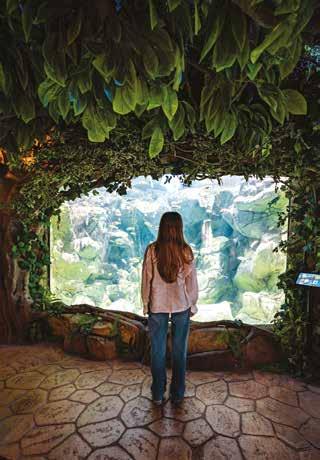
017
Malta National Aquarium
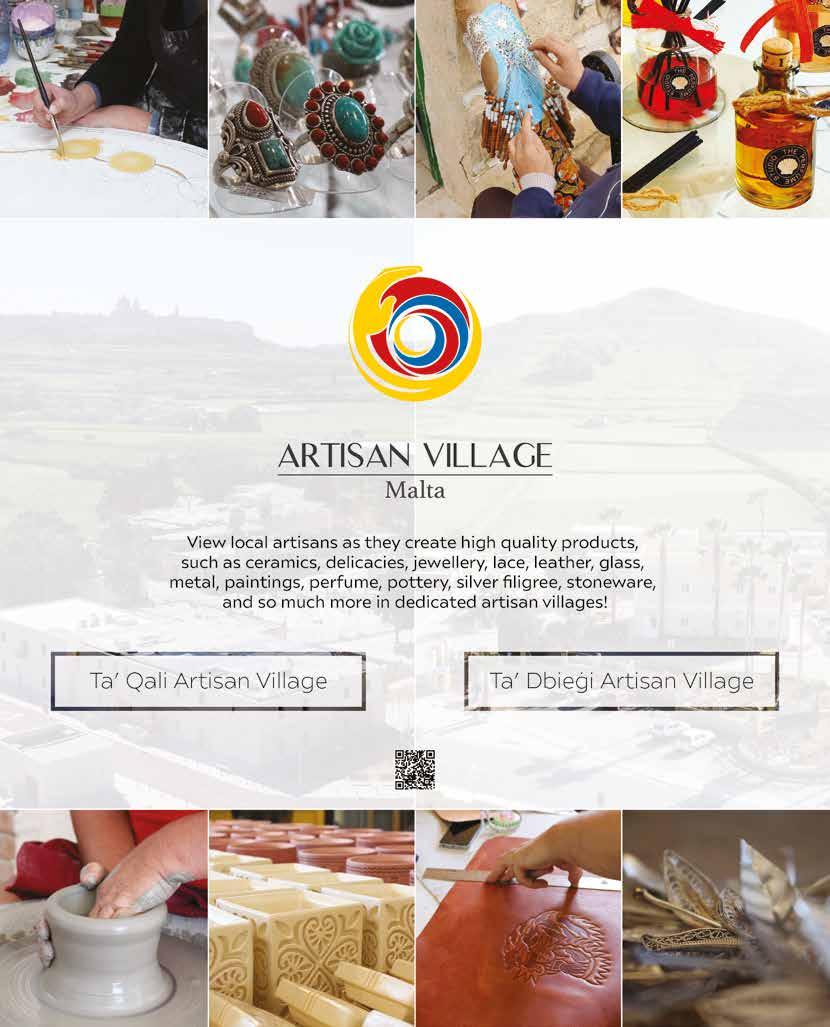

western Maltese shoreline, the Valletta harbour, and in the tropics, as well as on reptiles and amphibians. There is even a replica of an ancient shipwreck and of Roman remains, including the anchor of the vessel which brought St Paul to our shores – a double of the original found at the Malta Maritime Museum. On the other side of the island, in Ħal Far, Playmobil FunPark exalts a different form of engagement, and is a particular favourite with little ones. Boasting a blend of indoor and outdoor play areas, it is designed to ignite your children’s imagination as they experience a variety of adventures and games – all through interactions with the iconic Playmobil range.
The Playmobil FunPark is a particular favourite with little ones. Boasting a blend of indoor and outdoor play areas, it is designed to ignite your children’s imagination as they experience a variety of adventures and games.
4.
PICNIC ON THE BEACH
Lately, the sky has been a blank, white canvas of heavy, soft cloud which bears down on every single one of us, bringing along allergies. Not the perfect weather to be in the outdoors, I suspect. Yet, things can only get better and, as soon as the sun comes out, it’s time to head to your nearest stretch of sand and crack open the sandwiches. The sea may still be a little bit cold to swim (if you’re used to very warm waters, as I am, although I admit that growing up in a hot country has skewed my inner thermostat). But the views by the sea are spectacular. My favourite spots are Għajn Tuffieħa Bay, for its crystal-clear waters (just get there early, before the crowds), and Ramla Bay in Gozo, for its spectacular red sands.
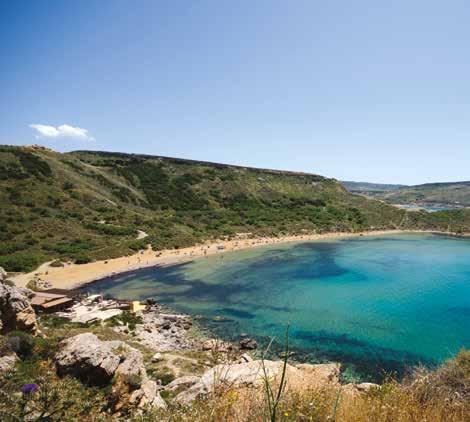
THINGS TO DO
Playmobil FunPark
Għajn Tuffieħa. Photo: Mario Galeaviewingmalta.com

6.
INDULGE IN MALTA’S NATURAL LANDSCAPES AND UNEARTH THEIR STORIES
On the surface, the geography of the Maltese islands is characterised by an aridity typical of the southern Mediterranean, but this belies the depth of textures, and the narratives that live beneath. Limestone Heritage, a family-run attraction dedicated to celebrating the island’s yellow, porous stone, which is endemic to the region, is a rare spot where some of the islands’ geological richness is revealed. If that works up a thirst, head to the Meridiana Wine Estate in Ta’ Qali –just a short 20-minute drive away – to indulge in some of the land’s best vinicultural offerings. Book a wine tasting session and make sure to savour a glass of the white, Isis, and the red, Nexus – two lines which have garnered a loyal following (as well as a spate of awards).
7.
HIT THE MOVIE TRAIL
Since 1925, when H. Bruce Woolf’s Sons of the Seas was shot on location in Malta, the islands have attracted hundreds of directors and producers pulled by the country’s temperate climes and beautiful locations. Today, the Maltese film servicing industry is a multi-million-euro sector. Indeed, in the late ‘70s, the legendary filmmaker, Robert Altman, landed here, together with Robin Williams, to make Popeye – a rocky shoot which was characterised by tensions with studio executives. The film flopped at the box office, but the set they had built, located in Anchor Bay in the north of Malta, still stands and has become a family favourite. The decadesold Sweethaven Village has been transformed into a fun park, where kids can run in and out of the wooden houses, and even interact with the characters from the film.
5.
EXPERIENCE THE SUMMER SOLSTICE AT ĦAĠAR QIM AND MNAJDRA
NEOLITHIC SITES
A few years back, some friends and I decided to mimic Malta’s early peoples and watch the summer solstice at the prehistoric sites of Ħaġar Qim and Mnajdra in the Archaeological Park in Qrendi. We were keen to witness the sun’s rays as they hit upon the temple’s altar, a metaphysical experience connecting us to our forefathers (and mothers). But we got the day wrong. Twice. This year, Heritage Malta is once again organising tours, this time over three mornings (so you have little risk of making our mistake): 20th, 21st and 22nd June. Tickets go on sale a month before. And if your stay does not coincide with these dates you should nonetheless ensure to visit these awe-inspiring monuments, both inscribed on the UNESCO World Heritage List.
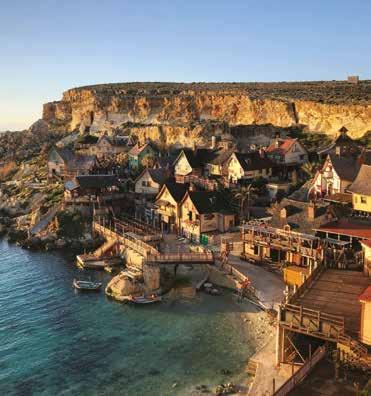
THINGS TO DO 020
Ħaġar Qim. Photo: Heritage Malta
Popeye Village. Photo: Pexels

That day, as young and old were praying together, a Luftwaffe plane dropped a bomb onto the church. It pierced the ceiling, landing inside, but it did not explode, saving the lives of the dozens who had witnessed the drop with bated breath.
9.
8.
HEAD TO THE PUB IN VALLETTA
No, not just any pub. This watering hole, situated in Archbishop’s Street in Valletta, has become a site of pilgrimage (of sorts), for this was the very last place actor Oliver Reed downed his last pint in 1999, while he was in Malta filming Ridley Scott’s first instalment of Gladiator. Today, the bar is a hangout spot for the island’s theatre crowd (no surprise there), who congregate in the evenings, after performances, to plan their next shows. However, if you’re more in the mood for sophisticated cocktails, Valletta offers a smorgasbord of options: Café Society at the foot of St John’s Street makes a mean Basil Fawlty – gin, basil, lime, and sugar – or a Cuban Gringo – rum, lime, ginger, chilli, and ginger beer. For a quieter night, a walk along St Barbara’s Bastions, overlooking the Grand Harbour, will take your breath away.
WITNESS THE BOMB WHICH FELL… AND DIDN’T EXPLODE
One afternoon, in 1942, at the height of World War Two, families were congregated inside the Mosta Dome, a parish church, built in 1860, situated in the heart of the central Maltese town. It had been a tough year: there were frequent air raids which had people scurrying underground to their nearest public shelter, or huddled in their family home’s cellar; famine was looming as ships couldn’t make their way to deliver vital resources to the population; and there seemed to be no end to the conflict in sight. That day, as young and old were praying together, a Luftwaffe plane dropped a bomb onto the church. It pierced the ceiling, landing inside, but it did not explode, saving the lives of the dozens who had witnessed the drop with bated breath. Today, the bomb (still intact but deactivated, of course) can be seen at the Mosta church. There’s much more to see inside than the evidence of a would-be tragedy: the dome itself is one of the largest unsupported domes in the world, and intricate artworks adorn its walls.
10.
HOP ON A FERRY TO GOZO

Mġarr Harbour, Gozo. Photo: Fotolia - Fred
There’s so much to see on the Maltese islands that, sometimes, it can be easy to miss out on those spots which may feel a little bit more out of the way than others. But, no visit to the archipelago is complete without a visit to Malta’s stunning sister island, Gozo. Known as il-gżira tat-tliet għoljiet (the island of three hills), the smaller rock is bucolic, with azure, clear, unforgettable seas. Rent a car and drive through the island’s countryside lanes, stopping off at Maxokk Bakery in Nadur, for a bite (well, you’ll need more than one) of their famous Gozitan ftira – this is a form of pizza topped with traditional Mediterranean ingredients and thin slices of crispy potato. Then, stay till the sun starts to go down and grab an aperitif in one of Gozo’s seaside bars.
THINGS TO DO
022


UNVEILING THE RESTORED GRAND MASTER’S PALACE
After a multi-million-euro renovation project, the Grand Master’s Palace in Valletta – the former seat of Malta’s rulers and current seat of the Office of the President of Malta – has finally reopened to the public. REBECCA ANASTASI takes a tour inside, accompanied by Senior Curator EMMANUEL MAGRO CONTI, to discover the stories hidden behind its world-renowned Armoury, state rooms and gilded halls.
EXPLORE
024
Photos: Heritage Malta

It has been more than a decade since I last set foot inside the walls of the Grand Master’s Palace in Valletta, despite my almost weekly visits to the capital, and, in that time, the former home of Malta’s administrators, colonial governors and republican parliament has undergone an extensive period of restoration, breathing new life into its 16thcentury walls.
The Palace is positioned in the heart of the island’s capital city, its steadfast façade dominating the large open square, known as Pjazza San Ġorg (St George’s Square). It was the first edifice to have been built by the Knights of Malta for their new celebratory city – Valletta –following their victory during the Great Siege of 1565.
Over the years, the site was extended, growing not only in size but in stature, as successive Grand Masters aimed to establish their legacy through the topography of the Palace: more frescoes were commissioned, tapestries hung and architectural works completed. When the Knights left in 1798, the French army, led by Napoleon, descended onto the Palace, which was then transferred to British colonial hands in 1800, when the Civil Commissioners, and later on, the Governors took up residency in its cavernous rooms. In 1921, Malta’s parliament first met within the Palace, which continued to host the country’s ministers and administrators until 2015, when they started to shift to the new building at the entrance of the capital, designed by famed architect, Renzo Piano.
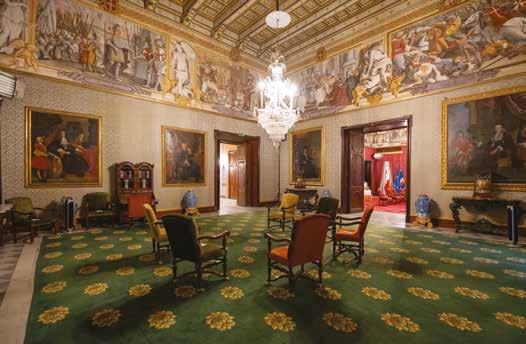
025

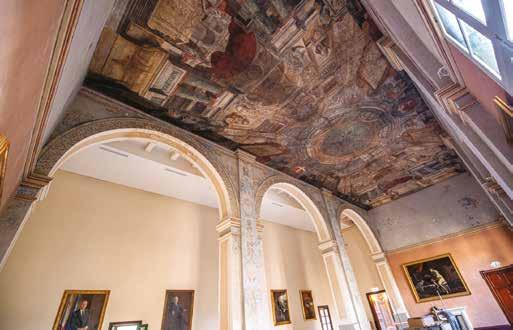
This site has a long history. In 1601, Grand Master Alof de Wignacourt decided to establish the Armoury in his Palace, which was to house usable weapons, issue armour for common soldiers, as well as richly decorated pieces left by deceased Knights.
Today, the Grand Master’s Palace continues to host the Office of the President of Malta; however, its corridors, stately rooms and Armoury have been given renewed vigour as the result of a renovation project which saw the past and the present coalesce to reveal a palimpsest of Malta’s history.
I arrive at the heavy iron doors guarding the entrance to the Palace on a Tuesday morning – a weekday like many others in which the capital teems with lawyers heading to the Law Courts, shopkeepers plying everything from souvenirs to trendy shoes or high-end fashion, and waiters moving in and out of cafés serving the coffee-thirsty morning crowds. Inside, a sonic lull
has fallen within the cracks of the limestone walls – a hush characterised by multi-lingual voices and the rustling of the courtyard’s trees.
I enter through the turnstiles, walk across glass flooring showcasing the original 1568 limestone flooring unveiled during the restoration, and head into the new visitors’ centre. Here, a video, detailing the 450-year history of the Palace, plays on multiple, large wall-to-ceiling screens, comprising the perimeter of the dark enclosure. In the next room, old printing presses, some dating back to the early 20th century, are in the process of being restored. I am told, by the guide accompanying me to meet the Palace curator, that some of these formed part of the government’s stamperija (printing press) during the Sette Giugno (7th June) riots of 1919, in which Maltese crowds, angry about the rise in austerity, headed to St George’s Square where they were shot upon by the British troops, who, eager to keep control, killed four men.
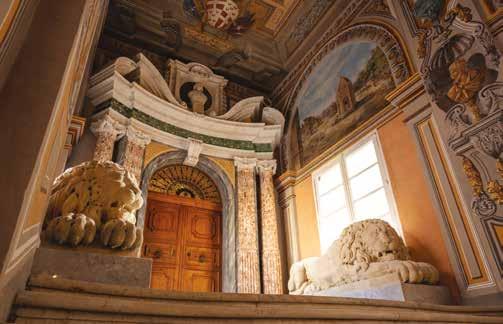
These are, of course, calmer times for the Maltese islands, yet the Palace – as Senior Curator Emmanuel Magro Conti tells me – is a capsule of the archipelago’s dramatic history. Indeed, almost as testament to this, Mr Magro Conti accompanies me, first, up a staircase built by the British in 1860, which was forged to allow the Palace Armoury to be visited by the Maltese public, who, after years of expressing frustration at its inaccessibility, was finally permitted to witness the extensive military heritage bequeathed by the Knights.
EXPLORE 027


Our main concern with the restoration of the Armoury and, indeed, of the entire Palace, was conservation; we knew we needed to take care of our heritage.
“This site has a long history. In 1601, Grand Master Alof de Wignacourt decided to establish the Armoury in his palace, which was to house usable weapons, issue armour for common soldiers, as well as richly decorated pieces left by deceased Knights,” Mr Magro Conti says. However, their display and storage were rife with issues: “the whole collection, particularly from 1974 to 2019, was stored in our semi-underground stables, since, up here, the Maltese parliament convened. But the environmental conditions downstairs were wreaking havoc on the organic materials, such as the leather and the wooden muskets, as well as on the metals. Therefore, our main concern with the restoration of the Armoury and, indeed, of the entire Palace, was conservation; we knew we needed to take care of our heritage,” Mr Magro Conti says.
The government agency, Heritage Malta, spearheaded the restoration project, which was split into four phases and financed through European Union and public funds: the first and second, now both completed, included the renovation of the corridors, the Armoury, part of the state rooms, as well as the upper courtyard. The third phase is
practically underway, and includes the renovation of Neptune’s courtyard, stables and the areas around them, while the fourth phase will see the basement be given a facelift.
“When Heritage Malta started discussing this project back in 2003, the first job was to campaign to have parliament move out, so that the Armoury – which we knew was rare and world-class – could take its rightful place,” Mr Magro Conti recalls, adding that the organisation also had larger plans. “We wanted to inspect the building, the frescoes, the flooring, and to rework the entire infrastructure of the Palace, reinstalling all the water and electricity. We commenced the actual process in 2005, and it’s still ongoing.”
Today, the Armoury is organised chronologically, starting from the 1400s, through to the Great Siege (and up to the 1790s) with digital displays highlighting the pieces’ historical trajectories. Parts of Grand Master La Valette’s armour, possibly worn as he led the Knights to victory in 1565, as well as
028 EXPLORE
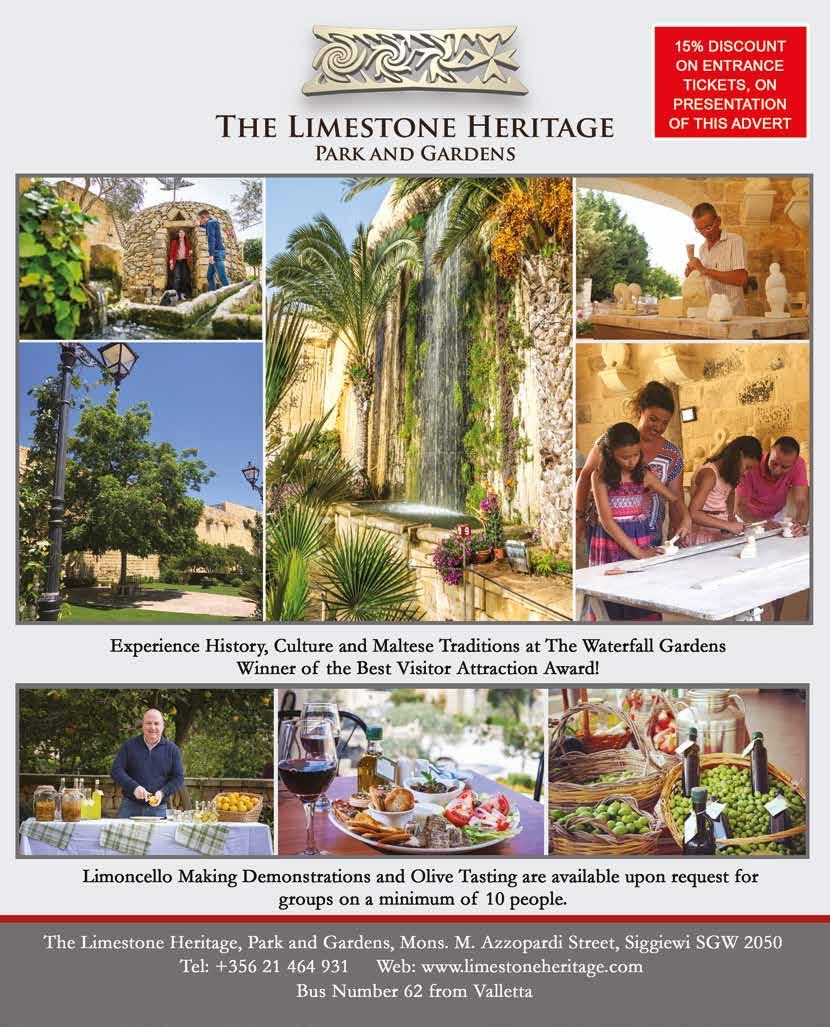
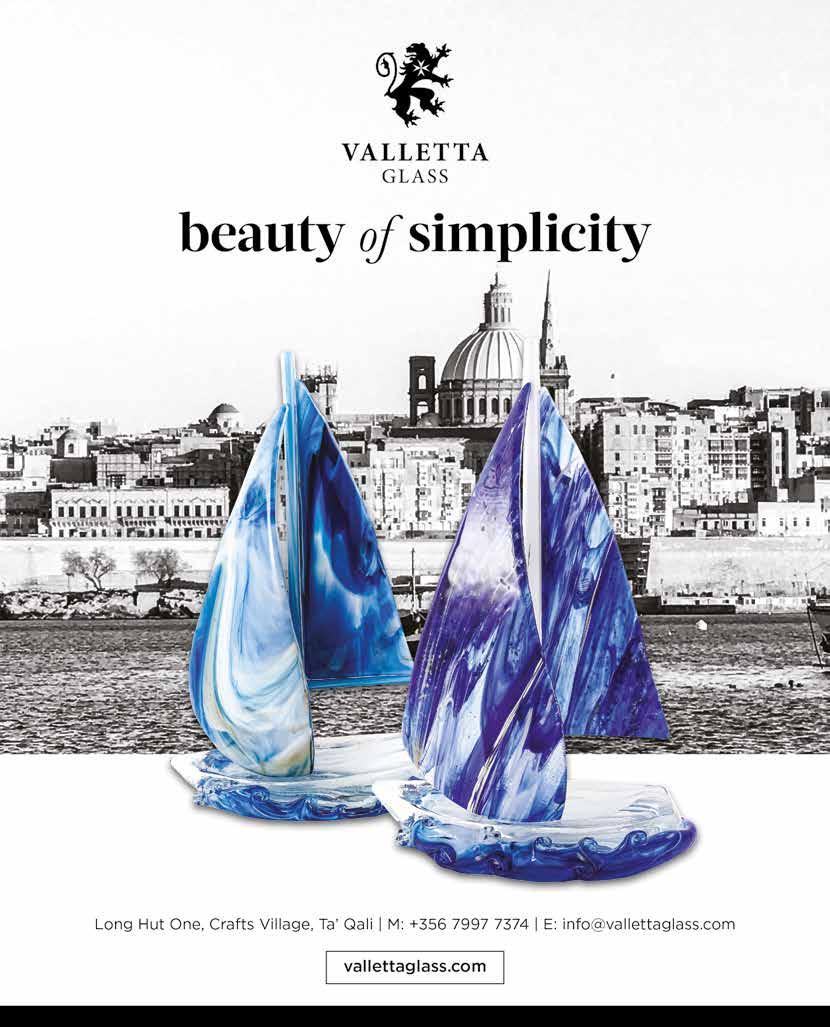
Turkish armour from the battle – cannonballs, cavalry weapons and pieces worn by the famed Janissaries – can all be seen in glass displays: “it’s the largest collection of 16th-century arms and armoury amassed anywhere in the world, which belonged to soldiers and fighters, some of which are known to have been captured from the enemy at the time,” Mr Magro Conti says. “And we have so many pieces which have been historically amassed, and displayed here in this Palace.” The collection is, indeed, extensive – so much so that, despite the displays lining the long corridor of the Armoury, these are “not even one third of that belonging to the Grand Master’s Palace,” with the rest mostly taken away by the French, in 1798, and by the British after 1814. Moreover, other items are also in the process of being restored.
“Even though we only have a little more than 400 soldiers’ half suits of armour – of the original 9,000 – we still have thousands of swords, helmets, breastplates, greaves, and sabatons. There are also dozens of pieces still scattered over Europe, and we painstakingly spend a lot of time attempting to locate them, and bring them back,” he attests. Indeed, as a result of Malta’s history, the Palace’s collection is still missing key pieces – such as Grand Master La Valette’s sword and poniard – which today continue to reside in the displays of museums in European capitals.
Here, in the Palace Armoury, some of the full suits are impressively large, with helmets weighing a colossal 22kg; one of the full armours, owned by Jean-Jacques de Verdelin, whose former palace is now the Civil Service Sports Club, stems from 1690 and is inlaid with gold. A portrait of Verdelin has been placed beside his armour, in a revealing juxtaposition of representation and reality, underscoring the way these Knights wanted to be perceived and remembered. Others still contain the

marks of battle, with dents and scrapes writing a past which can only be seen through these fragments.
Moving into the Palace corridors, we walk across the decorative flooring, which, Mr Magro Conti says, had to be photographed, removed, restored, and placed back during the restoration process. “It was a big headache, and we still have parts to complete,” he attests. We walk into the Uccelliera, where the Grand Masters, after Christopher Colombus’ discovery of America, would house exotic and prey birds of all species, as a symbol of power and wealth, and in keeping with the fashion of the period. In this room, a soffit, removed in 1940 for safekeeping, during World War Two, and re-installed in late 2022, is now on display for the first time after so many years.
In the corridors, frescoes featuring flamingos are still in the process of being restored, while flowerpots for exotic plants – as part of the Palace’s Cabinet of Curiosities – have been cleaned and are now back in place. The paintings on the corridor walls have been organised according to theme, with the Spanish monarchs in one hallway, and the British kings and queens in another. In the Page’s Room, the Palace curators identified, through their research, different Grand Master paintings containing representations of pages, and exhibited them. In the corner, a portrait of a Knight of Malta, at the age of three, is showcased: “you could enter the Order at the age of two, like Grand Master Pinto who spent 90 years as a page or a Knight of Malta, until his death,” Mr Magro Conti reveals.
Looking ahead and to elaborate, the third and fourth stages of the restoration project will include the cleaning and replacing of the carpets in the Palace’s stately rooms, as well as renovating the Chapel and the Grand Master’s Bedroom as well as the Throne Room, where Heritage Malta will install a number of portraits, take up the flooring and conserve the frescoes. Here, the ceiling will also be restored, and the balcony removed and placed back inside the chapel, “it’s proper location,” Mr Magro Conti says.
“It’s one thing after the other,” the Senior Curator says. “We carry out our research and re-instate the pieces; it’s all still ongoing,” he smiles. And, as I leave the Palace, I feel overwhelmed by the vast, detailed work being carried out by the Palace’s passionate team – and I am comforted by the sense of expertise and professionalism Mr Magro Conti has revealed as being at the heart of the project.
Access www.heritagemalta.mt for visiting details.
031
EXPLORE
MOSTA AND THE MARIAN BASILICA OF THE ASSUMPTION
By PROF. GEORGE CASSAR , Department of Tourism Management at the University of Malta.
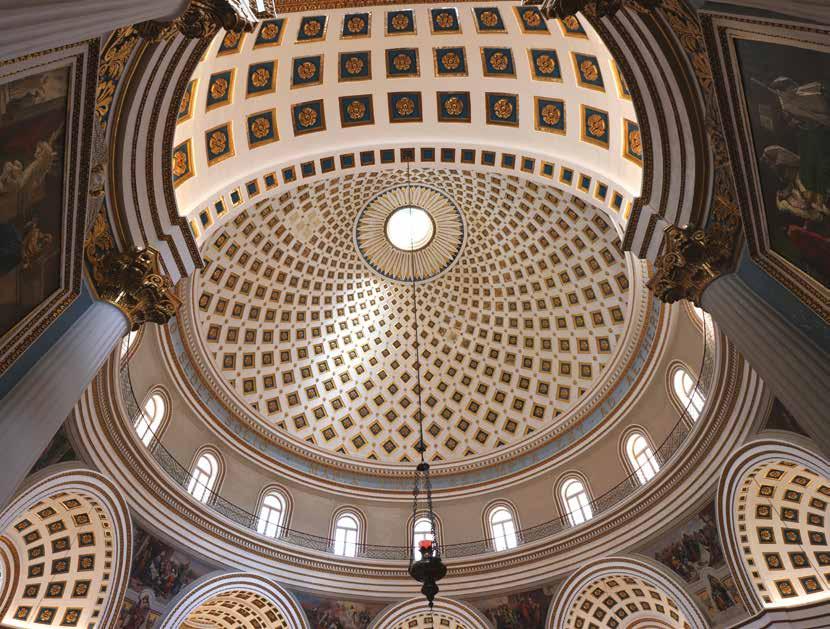
Located at the heart of Malta lies the vibrant town of Mosta, renowned for being home to one of the archipelago’s most splendid churches. The basilica dedicated to the Assumption of the Virgin Mary stands as a captivating marvel, beckoning every visitor to Mosta.
Often referred to as the Mosta Dome or Rotunda, this grand structure mirrors the architecture of Rome’s Pantheon, albeit with distinct modifications by its architect, George Grognet
de Vassé. Boasting one of the world’s largest unsupported domes, the basilica enchants all who step inside with its grandeur, symmetry and décor. Indeed, a multitude of captivating features awaits discovery within its walls.
As a popular tourist destination, the basilica welcomes visitors throughout the week, extending its hours into the late evening on select days. Whether one’s visit is motivated by faith, culture, or both, it promises to be a rewarding experience. Notably, this majestic temple owes much of its existence to the dedicated efforts of
032 MUST VISIT
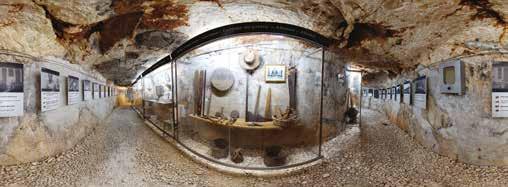
local volunteers, who tirelessly devoted themselves to its construction seven days a week between 1833 and 1860, until the completion of its dome. Interestingly, prior to the completion of this rotunda, an older church within the space continued its pastoral service until its dismantling in 1860.
For religious pilgrims, the basilica stands as a profound ode to the Lord and Our Lady. Its imposing architecture and exquisite interior evoke a sense of reverence among the faithful, serving as a testament to the greatness and power of the Creator, as expressed through the skill and dedication of the architect and builders of this magnificent edifice.
To the culturally inclined visitor, the structure offers a visual spectacle that elicits a profound sense of emotion and awe. Its array of artworks, distinctive interior design, architectural proportions, and unique ambience provide ample reason for art and culture enthusiasts to explore it.
During their visit, tourists may opt to seek solace and contemplation in the tranquil space located behind the main altar of the basilica. This relatively secluded area offers an ideal setting for individual meditation or prayer. Moreover, groups can convene here for prayer sessions or spiritual reflections, and arrangements can also be made for private Holy Mass ceremonies.
Exploring this Marian sanctuary offers a journey filled with enriching experiences. Ascending to the roof above the portico unveils panoramic views of the surrounding landscape and the town below. Continuing onward, visitors can venture onto the internal circular balcony, to admire the magnificent interior and intricately designed dome.
Upon returning to ground level, visitors have the opportunity to explore a World War Two shelter situated beneath the church parvis. This fascinating excursion showcases authentic artefacts from daily local life and crafts of yesteryear, providing an engaging experience.
The organisers also offer tours to various places around Mosta and its outskirts. This unique opportunity enables visitors to see some of the historical chapels and other interesting sites of local heritage.
Before concluding the tour, visitors are encouraged to make a final stop at the Dome Visitors Centre, conveniently located just a few steps from the basilica. Here, they can browse through souvenirs, enjoy refreshments at the cafeteria, sample traditional Maltese cuisine, and more, thus further enhancing their overall Mosta experience.


033
T: 2741 8368; E: kppmosta@gmail.com

“MUSIC IS AN
OBSESSION
I’VE HAD SINCE I WAS A CHILD”
Soprano NICOLA SAID has dedicated her life to song. After training in prestigious music programmes across the globe, she has performed on stage in London, with the English National Opera, and has even sung for a princess. REBECCA ANASTASI sits down with the talent to discover her passions and drives – as well as her favourite things from the island.
034 MEET THE LOCALS
Photo:
Inigo
Taylor
“I
started piano lessons at seven years old, and singing at nine, but I was always humming a tune. My brother hated it,” soprano Nicola Said laughs, remembering her childhood joy in discovering new melodies, tunes and rhythms. She recalls her elation at experiencing the musical cadences in Andrew Lloyd Webber’s The Phantom of the Opera younger, I was obsessed with Christine,” she attests. However, it was to be a few years before opera became an integral part of her life, and her identity.
“When I was younger, I started to train with Maltese soprano Gillian Zammit, who put me up for a scholarship organised via the Ian Tomlin School of Music. Tomlin has a relationship with Napier University, in Edinburgh; I auditioned and won a place on their programme, so I moved to Scotland,” she says. It was here that she fell in love with opera.
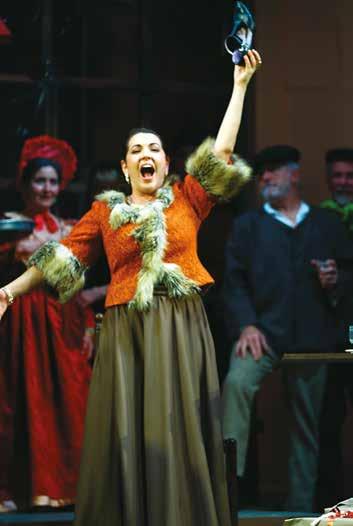
was like opening a treasure chest and peaking inside,” she smiles.
Nicola spent two years in Edinburgh, although, vocally, “the programme was not working for me.” Realising that the issue stemmed from the Jo Estill technique of singing which “may work for others, but, unfortunately, didn’t for me,” the soprano headed to Italy, where she enrolled on a new course. Her teacher there, Shigemi Matsumoto, encouraged her to apply to California State University, in order to complete her Bachelor’s degree in music. “I applied, and got in. I was there for three years in total, but, after so much time, I wanted to come back to Europe, and to come back home to Malta. At the time, I was only able to see my family twice a year, and I’m very close to my family, so that was hard,”
“I was obsessed. I would listen to the music all night; I would bring scores home with me from the library; I would get piles and piles of books to read, so I would listen and read at the same time. This carried on for nights on end. It was exciting. I felt as if a whole new world had opened up, one which I had never really known to exist. I actually thought – ‘wow, do people actually do this for a living?’ It
However, Nicola was intent on furthering her education, and was accepted onto the Guildhall Artist Masters in Performance, at the Guildhall School of Music and Drama in London, which was funded by the Malta Arts Scholarship. After two years, she progressed onto the Guildhall Opera Course, for which she received a scholarship from the institute itself. “At around the same time, I was also applying for Young Artist’s programmes, but I was getting a bit older, and, at that point, their age criteria started limiting my eligibility. My voice was also changing – it was becoming more lyrical,
I was obsessed. I would listen to the music all night; I would bring scores home with me from the library; I would get piles and piles of books to read, so I would listen and read at the same time.
035
Nocial S a i d as Musettain LaBohèmeatTeatru
J. Mus c a tA ozz drap i
tal-Opra Aurora.Photo:Christine
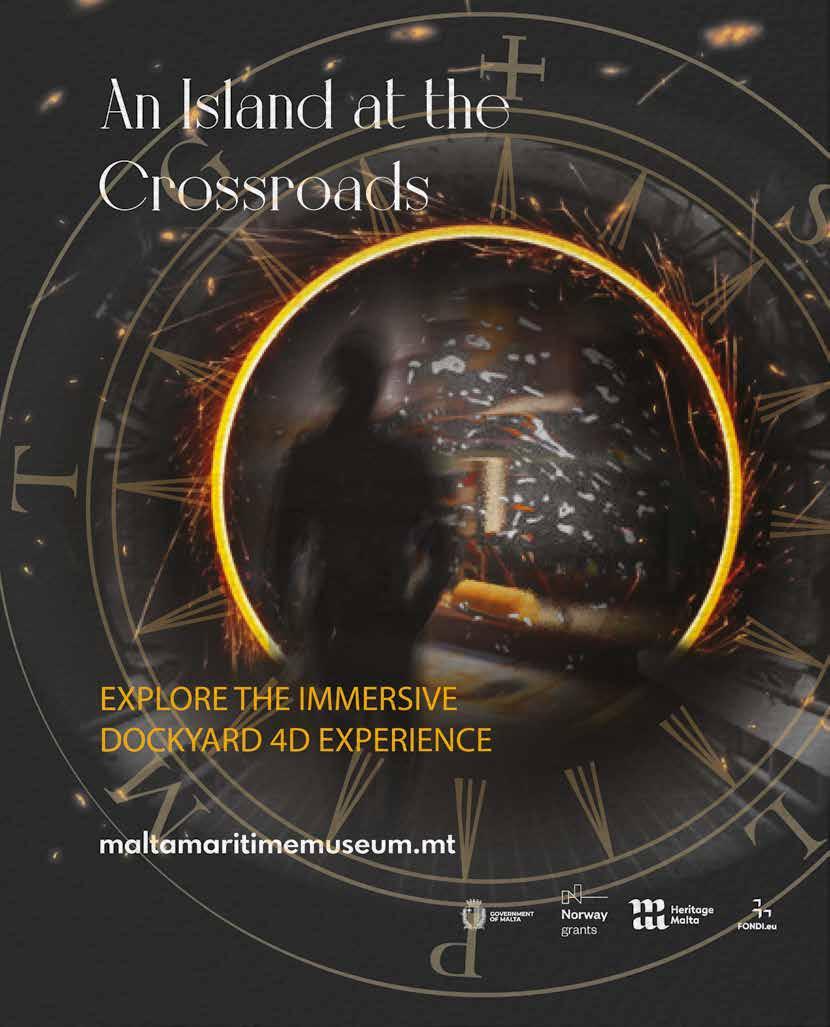
They put me in a harness, before curtain call, and we practised going up and down. I was hanging up, above the stage, my legs dangling, and it’s actually difficult to sing when you’re up there.
which was something I had not expected; it was becoming warmer and rounder so when I applied, I wasn’t even sure about where I would fit. When you’re competing at this level, with the best young singers from across the world, they really want to see that you’re a ready package,” Nicola explains.
Her training, talent and dedication opened doors, and, in December 2022, she made her debut with the English National Opera at the London Coliseum. “I had been engaged to cover Soprano Angel First Class in It’s a Wonderful Life (Jake Heggie and Gene Scheer). The night before one of the shows at around 10 or 11pm, I was told I have been placed on standby due to the possibility of illness in the main cast. We had only rehearsed for two to three weeks prior to that. Early that morning of the performance, I received a text saying that I would be going on! A few hours later, I found myself in hair, make-up, and costume. It felt like a dream. I didn’t know what was happening; you cannot really compute what is going on, I guess,” Nicola recalls.
The production required her to fly across the stage. “They put me in a harness, before curtain call, and we practised going up and down. I was hanging up, above the stage, my legs dangling, and it’s actually difficult to sing when you’re up there,” she laughs. Half an hour before showtime, “I was on high alert. I felt very excited and nervous – this was my big chance with a well-established UK opera company. Theatre Opera companies tend to be made up of a close-knit circle of people, so it’s difficult to break in. Indeed it’s even difficult to get to this stage, that is to enjoy a debut such as this, so you have to grab the chance when you get it. I must have had a very good audition, and they must have pre-selected me at that point. But it’s really like winning the lottery. During the performance, I just savoured the experience. Sometimes, I still cannot believe it happened,” she attests.
That has not been Nicola’s only brush with the higher echelons, however. This March, she sang for her Royal Highness, The Princess Royal, at Spencer House. “I turned up to rehearse, just before the concert, and saw her name. The organisers had not wanted to tell me, so they don’t stress me out too much,” she says. More recently, Nicola has also kept busy auditioning for various roles including – in a moment of serendipity – for the role of Carlotta in The Phantom of the Opera on the West End. “I got into the fourth round of auditions, but it was for a dance call, and I’m not trained in that.”
Locally, in 2016, she accompanied Joseph Calleja on stage at the Granaries. She has also worked with Gaulitana Festival performing at Teatru talOpra Aurora Gozo. “I also sang the wonderful role of Musetta in La Bohème which was performed last month, and in 2023 I did Frasquita in Carmen with Teatru Astra. I feel very grateful to have sung on stage in Gozo. I’ve also performed with the Malta Philharmonic Orchestra, working with the tenor Vittorio Grigolo,” she says.

Photo: Inigo Taylor
037 MEET THE LOCALS

The dream is to sing at the Metropolitan in New York or the Royal Opera House in London.
Nicola is also pursuing a second Master of Arts, this time in Voice Pedagogy. “I’m very fascinated by technique; over the course of my formal education, when I was younger, I was told so many things, and sometimes that confused me. So, I would ask questions and my instructors wouldn’t necessarily know the answers, so I’d like to teach by passing on my knowledge, and my previous experience – but backed up by scientific knowledge. I want to be sure to be teaching the right thing. I would like to be at the forefront in teaching vocal technique, and I’d love to teach young opera students at University level, and contribute to their development,” she says.
Nicola’s studies and practice are also complemented by her social activities, and the cultural scene in Malta remains close to her heart, even though she is currently living in London. She is also, for instance, the Malta Airport Foundation Ambassador, working with them to promote the islands and boosting local opportunities for those operating within the cultural space.
Nicola set up Malta Opera, with the help of Noreen Cesareo, an organisation which was established to “promote opera, Maltese talent and classical singing in the country. I wanted to start something to propel artists here to better opportunities. I felt that, particularly here in Malta, we weren’t making use of our local human resources, and we have fantastic singers from the island, who have taken their talent to an international level. But, it remains a fact that we can do much more,” she explains, adding that Malta Opera has had much support and encouragement from many sources, including from the Arts Council Malta as well as the Janatha Stubbs Foundation.
Her advice for aspiring artists is “to do your research on who you want to take singing lessons with; try different
people. You should also,” she continues, “retain an awareness and a sensitivity towards your peers.” Looking ahead, Nicola continues to work towards accruing more performance opportunities both here in Malta and abroad. “The dream is to sing at the Metropolitan in New York or the Royal Opera House in London,” she smiles, concluding.
NICOLA’S FAVOURITE...
...OFF-THE-BEATEN PLACES IN MALTA AND GOZO:
1. Torri Xutu in Wied iż-Żurrieq
2. Mġarr ix-Xini, Gozo
3. Ta’ Pinu, Gozo
4. Sanap Cliffs, Gozo
...LOCAL EATERIES IN MALTA AND GOZO:
1. Sotto Pizzeria in Valletta – “for the best gluten free pizza ever!”
2. “I love fish and seafood, so anywhere in Marsaxlokk”
3. Palazzo Preca in Valletta
4. Fontanella in Mdina, “for gluten free cakes and the view!”
...LOCAL PERMANENT ATTRACTIONS WHICH FOREIGNERS SHOULD VISIT:
1. Festivals Malta’s events – “they promote Maltese works in all types of arts, including works by Maltese composers”
2. Casino Maltese
3. San Anton Gardens – “they are always a joy to visit!”
4. Palazzo Parisio
038
MEET THE LOCALS
Nicola Said as Musetta in La Bohème at Teatru tal-Opra Aurora. Photo: Ken Scicluna

CULTURE
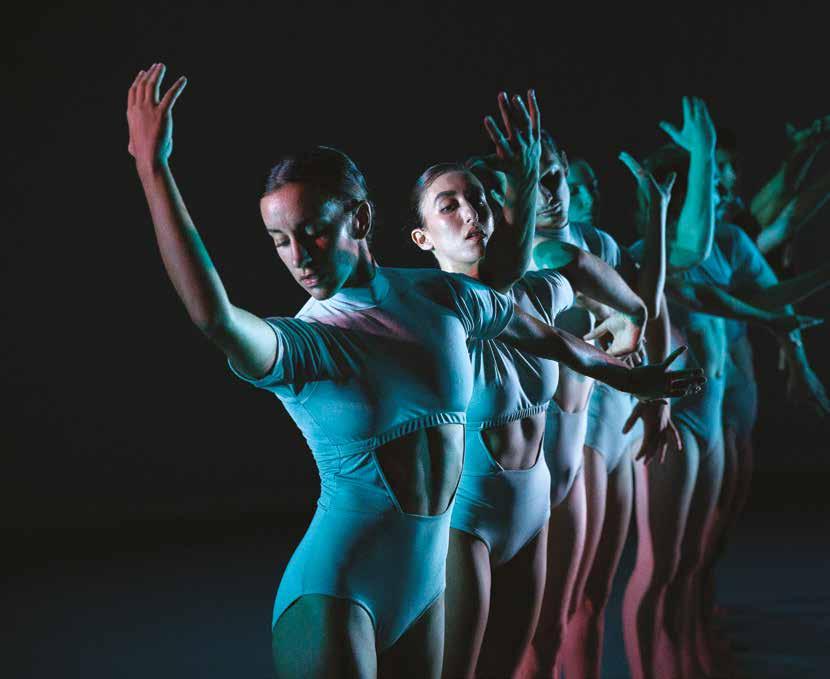
A DECADE OF TRANSFORMING PEOPLE’S LIVES THROUGH DANCE
Malta’s first national dance company, ŻfinMalta, has been redefining the island’s relationship with dance by shifting the art from pure visual performance to immersive audience experience. PRABJIT CHOHAN-PATEL sheds light on its 10-year journey and on what the future has in store.
Honouring ŻfinMalta’s 10th anniversary is more than about admiring its portfolio of productions or appreciating its dancers’ skill set. It is to get under the skin of the company’s mission, examine its journey under Paolo Mangiola’s direction and reflect on its future vision.
One of three organisations under the umbrella of NAPA (National Agency of Performing Arts – also comprising Kor Malta and Teatru Malta), ŻfinMalta defines itself as a hub that “cherishes, protects and pushes the dance art form”. Its extensive mission involves “inviting audiences to contemplate and question our contemporary world” which Paolo calls “one of the ultimate functions of art”. Each
040

On reefs and eroded lands we danced. Photo:

season’s lineup achieves this via different themes; productions have included (to name just some) On Reefs and Eroded Lands, Girls and Boys, How to Destroy Your Dance, Voyager, ŻfinMade, and Utopia.
Inheriting a young brand from Mavin Khoo (ŻfinMalta’s first artistic director), Paolo took over the helm for seven years, navigating an exciting, previously uncharted course before stepping down in summer 2024. He admits their goal “to transform lives through dance” was an “ambitious, wide and abstract concept” –carrying the added responsibility of careful decision-making as a taxpayer-funded institution.
Despite the challenges of limited resources and a small team, the company set about identifying the practical realities of this ambition, defining ideal communication methods and deciding coherent, aligned actions. Strategic priorities included building a loyal local audience (described as “ŻfinMalta’s first advocates”), assembling a reputable cohort of Malta-based artists and establishing interdependent departments around the core business elements. The
result has been a path of artistic discovery and growth for the organisation, its dancers and audience.
A key element of ŻfinMalta’s evolution was the foresight to think beyond the standard dance company operating format (namely staging annual budget-consuming shows, then closing the theatre doors between productions). Recognising this route’s limited ability to grow a loyal audience, Paolo took a different avenue, forming a living, breathing, collaborative community via an innovative expansion programme. The Audience Development strand features engaging, participatory activities such as pre-production open rehearsals and expert-led talks, sparking conversations and explorations of movement and interpretation. It has fostered a sense of belonging, encouraging audiences to delve deeper into the layers of meaning within each performance.
This initiative has been a major milestone of Paolo’s tenure, transforming dance into a more immersive, formative experience and giving rise to “an emancipated audience” that leaves the theatre with a
041
Camille Fenech Photography
Voyager.
Photo: Leonard Cocks

stronger understanding of the language of dance. The programme’s success is in no small part thanks to the commitment of Education and Administration Executive, Martina Zammit. As a dancer herself under Mavin Khoo’s tenure, Martina enthuses about the “multitudinous manifestations of dance” and fondly describes her longevity with ŻfinMalta as the “cycle that keeps on giving”.
Naturally, the company’s high-calibre dance ensemble must be credited for their integral role in the company’s story. Owning diverse creative voices that represent the many influences of modern Malta, these star players, such as Pearl Calleja, have lived through interesting changes. For example, production preparation at the time of ŻfinMalta’s inception typically involved dancers executing the teacher’s choreography. Contemporary techniques, however, are increasingly task-oriented, requiring dancers to become thinkers and collaborators in their own right, solving problems and generating ideas. The result is more empowered dancers with greater freedom of expression and creative involvement who are active agents (not just performers), instrumental in the final choreography the audience sees.
This amplified artist development has attracted the collaboration of renowned, pioneering international choreographers, including (among others) Tânia Carvalho, Emanuel Gat, Roy Assaf, Rosemary Lee, Ambra Senatore, and Lesley Telford. It has also enabled Maltese dancers including Tara Dalli to flourish on the world stage.
Launched in 2018, the Dance Education programme is another element of the Education and Outreach initiative, and part of the mission to “contribute to an open and expansive dance ecology in Malta”. Workshops and classes are designed to nurture local talent by
providing an accessible platform for aspiring dancers to hone their craft.
Given that none of these interactive, holistic projects were in the original remit, the record of accomplishments is impressive. However, looking to the future, the outgoing artistic director avoids the “loaded word” legacy. Instead, he expresses hopes for the continued cultivation of what ŻfinMalta has already achieved and speaks of leadership as “the ability to understand when a cycle is ending and allowing the institution [one has] served to keep developing through new voices and expertise.”
Taking the baton from Paolo, in mid-2024, is Matthew William Robinson who leaves his post as artistic director of National Dance Company Wales. Possessing a strong pedigree as dancer, choreographer, facilitator, and rehearsal director, and five years as artistic director for VERVE, Matthew has built a body of work reflecting a highly physical choreographic construction. Bringing to the table solid collaborative experience – from forging partnerships in sound, fashion, theatre, and technology – Matthew’s artistic vision is partly informed by how dance can make us view ourselves, each other and our world differently.
ŻfinMalta’s 10th anniversary is not just a celebration of the past but a testament to the enduring allure of dance and its capacity to positively influence lives and communities. With each step, movement and breath, the company seizes the chance to inspire, challenge and uplift, ensuring that the magic of dance continues to captivate audiences for years to come. Paolo concludes, “what I really wish is that we have transformed people’s lives, that we have really made an impact, even if it’s a small one.”
www.zfinmalta.org

CULTURE
Girls and Boys
042
Sunrise Mass


FOOD & DRINK

SEAFOOD SENSATIONS: 10 MUST-TRY DINING DESTINATIONS
EDWARD BONELLO scours the islands to compile his top 10 list of fish and seafood eateries across Malta and Gozo.
Spring and summer undoubtedly bring out the best of the Maltese islands. During these warmer months, while you may find yourself reaching for sunscreen more often and ensuring to stay hydrated, nothing compares to the breath-taking vistas of the Mediterranean. And what better way to fully immerse yourself in the
Maltese experience than through the islands’ best restaurants, especially those specialising in fish and seafood?
So, grab your notepad as we’re embarking on a journey to discover the 10 best seafood and fish restaurants the islands have to offer – a quest for the ultimate culinary experience, a pilgrimage honouring our blessed taste buds.
045
iStock
Photo: Nadezhda1906
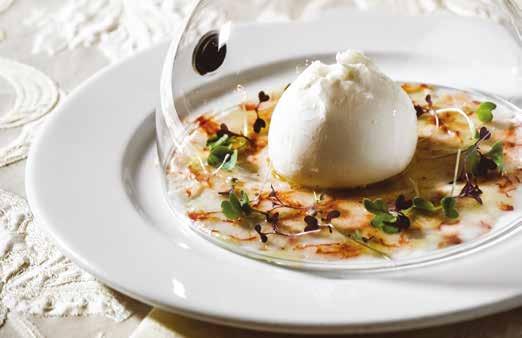
Nestled in Strait Street, Palazzo Preca stands as an oasis of beauty and exquisite flavours, curated by the dynamic sister-duo Roberta and Ramona Preca who run the show with zeal and dedication.
LA SPIGOLA RISTORANTE
Nestled in the southern town of Marsascala, overlooking the bay, La Spigola Ristorante beckons with its diverse menu showcasing fresh fish and seafood. Highlights include the enticing seafood-based appetisers and mouthwatering pasta dishes. The restaurant prides itself on serving genuine, locally inspired and generous portions. Helmed by an Italian chef and his Maltese wife, La Spigola exudes an authentic, unpretentious charm. Its quaint, old-timey décor makes dining inside a delightful experience, particularly during the colder months. However, it’s the terrace overlooking the water that truly steals the show, especially on those long, lazy summer evenings. Highly recommended for a laidback evening with friends, particularly when nobody has to worry about work the next day!

PALAZZO PRECA
More than just a restaurant, Palazzo Preca is a testament to the long-standing passion the Preca family has held for food and all things culinary for many decades. This legacy is celebrated in one of Valletta’s most beautiful 17th-century palazzos. Nestled in Strait Street, Palazzo Preca stands as an oasis of beauty and exquisite flavours, curated by the dynamic sister-duo Roberta and Ramona Preca who run the show with zeal and dedication. While fresh fish takes centre stage on the menu, numerous other options ensure satisfaction for every diner at the table.
LA FAVORITA
As its name implies, this restaurant, also in Marsascala is a local favourite. With a 30-year legacy in the business, La Favorita is the pride and joy of a local couple who run it with utmost love and care for each patron who sits at one of their tables. Indeed, La Favorita delights patrons with its authentic charm and offers a relatively competitive price range.
046 FOOD & DRINK
Palazzo Preca. Photo: Brian Grech
La Favorita

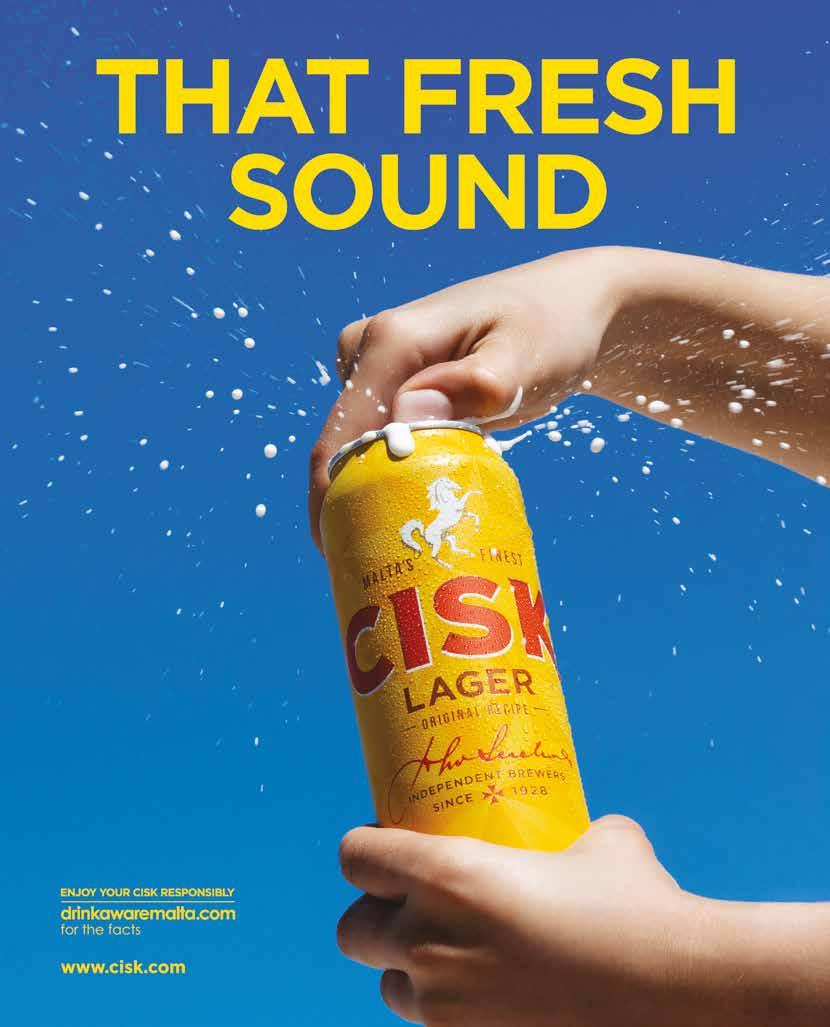
ZIGUMAR RESTAURANT
A 25-minute drive northward to Buġibba presents Zigumar Restaurant as another top contender for fish and seafood enthusiasts. A glance at their social media profile is all it takes to tantalise your taste buds! Zigumar shines with its exquisite crudi, sumptuous seafood platters and impeccably fresh fish – an expectation easily met, given its waterfront location. With such demand, securing a table on the outdoor terrace is best done well in advance.

At The Seafood Market Grill by Adam, diners are treated to an authentic seafood market experience, selecting their food from the counter and discussing their preferred cooking methods directly with the chef.
TA’ CARMEN
Located just a few metres from the sea, among the fishing boats in the picturesque Għar Lapsi bay, you’ll find Ta’ Carmen. Run by a family of locals, the restaurant offers excellent fresh fish and delicious pasta options, making it an ideal spot for a leisurely lunch in the sun. While the setting may be modest, the food more than makes up for it. The owner is exceptionally helpful and is always ready to recommend the freshest items available. Be sure to enquire about prices, as they may vary depending on the catch of the day.
THE SEAFOOD MARKET GRILL BY ADAM
Promising ‘an ocean to grill experience’, The Seafood Market Grill by Adam introduces a touch of innovation to the local culinary scene by blending a seated restaurant experience with elements reminiscent of a fish shop environment. The emphasis here is on the exceptional quality and diverse selection of seafood available, which is truly unparalleled. Adam himself, alongside his wife, ensures an extensive variety of seafood is on offer, sourcing the most exotic catches from the around the globe. Here, diners are treated to an authentic seafood market experience, selecting their food from the counter and discussing their preferred cooking methods directly with the chef. This place is perfect for indulging in tapas and sharing dishes. And, by the way, the cocktails are not to be discounted.
049 FOOD & DRINK
The Seafood Market Grill by Adam. Photo: Joel Gueller Photography
ARZELLA
And no tour of the best fish and seafood restaurants would be complete without a quick hop over to Gozo, particularly Marsalforn. Perched overlooking the sparkling blue sea, Arzella offers an incredible setting to spend a lazy summer afternoon or a memorable night in great company. The family-run restaurant provides a superb selection of fish, seafood, pasta, and continental cuisine, expertly served by the friendly staff. One piece of advice: ensure you have a room booked for the night somewhere in Gozo, as you won’t want to drive back to Malta after experiencing this culinary delight!
LA CAPANNA
Returning to the south of Malta, we find ourselves in fish-Nirvana, none other than the quintessential fishing village of Marsaxlokk. This picturesque village buzzes with the vitality of the fishing industry, ensuring that its restaurants boast the freshest and finest catches available. It’s no surprise then that La Capanna, one of the island’s most esteemed fish establishments, receives accolades from all who step inside its doors. La Capanna’s unwavering commitment to fresh fish and impeccable service results in an all-encompassing dining experience. Guided by its dedicated owner, a true epicurean and aficionado of food and wine, and walking encyclopaedia of all things fish-related, the restaurant offers a diverse array of starters and a creative spin on seafood dishes.
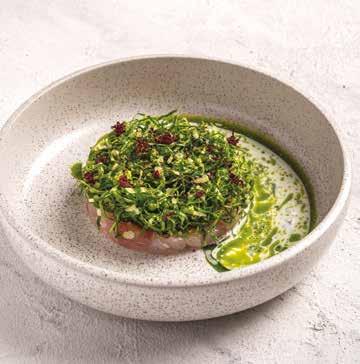
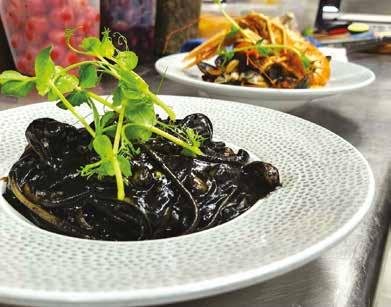
ROOTS RESTAURANT
Also in Marsaxlokk, Roots Restaurant offers a wider culinary scope than most. Here, you can enjoy local cuisine, seafood delicacies and Mediterranean fusion dishes. Much like other eateries in Marsaxlokk, you have the option to dine by the sea. Roots is a family-run establishment, led by its wineconnoisseur proprietor, who is always eager to recommend the perfect wine pairing for your red snapper or dentex. Notably, the owner personally imports wines, ensuring an exceptional dining experience.
TARTARUN
We’ve saved the best for last. Arguably one of the finest, if not the best, fish and seafood restaurants in Malta, Tartarun has much to be proud of. As a Michelin recognised restaurant, Tartarun embodies sophistication while maintaining authenticity and creativity, a testament to the love and dedication poured into each dish by twin brothers James and Stephen, wholeheartedly supported by their mother. This dining experience is truly elevated, yet it never feels presumptuous or pretentious for a single moment. Located across the Marsaxlokk bay, Tartarun offers extraordinarily fresh fish and seafood, with their selection of crudi, snacks and inventive pasta dishes unrivalled.
050 FOOD & DRINK
Arzella
Tartarun
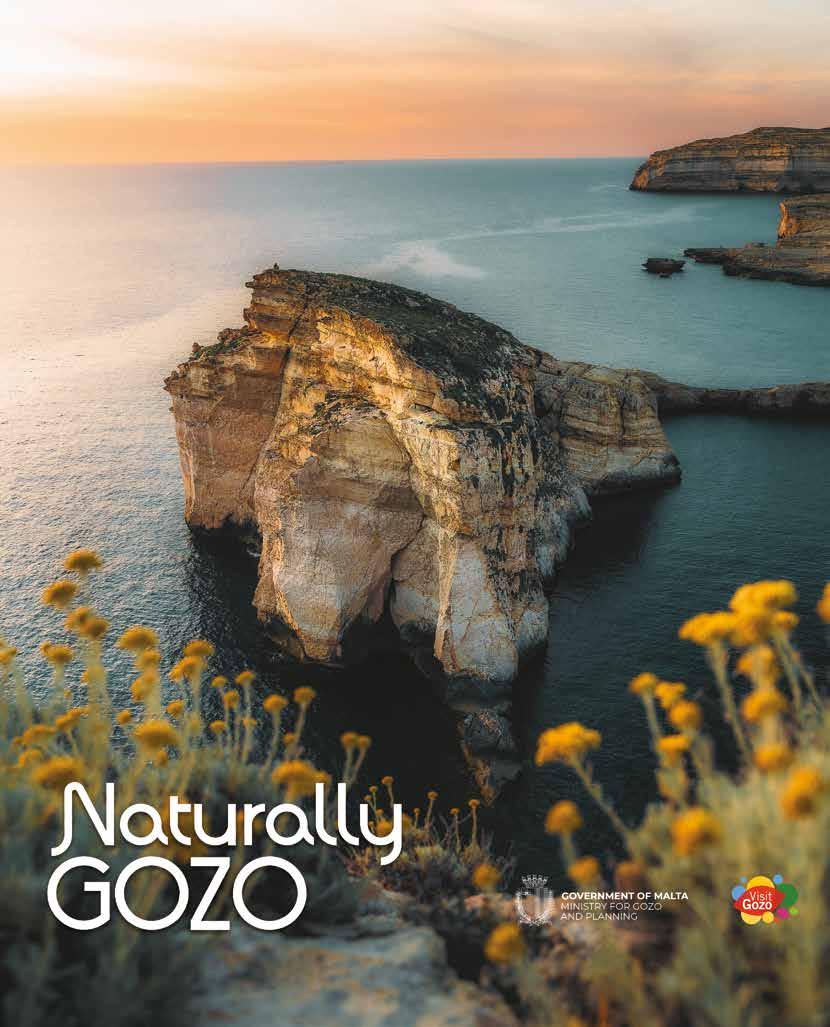

AN UNPARALLELED GAMING ADVENTURE
CASINO MALTA stands as the latest and most expansive casino on the Maltese islands.
Established by the Eden Leisure Group, a prominent player in Malta’s hospitality and entertainment sectors, Casino Malta promises an unparalleled gaming adventure within an opulent setting. Nestled in the vibrant core of the Mediterranean, this premier casino, located within the InterContinental Hotel in St Julian’s, is renowned for its lavish ambience, diverse gaming selections and exceptional service.
Spanning over 3,000 square metres, Casino Malta boasts a capacious gaming floor offering an extensive array of games catering to every preference and skill level. From traditional table games like blackjack, roulette and poker to stateof-the-art slot machines featuring the latest titles and themes, visitors are spoiled for choice at this world-class establishment. For those seeking an extraordinary experience, Casino Malta provides VIP services tailored to the needs of discerning guests, ensuring each visit is truly memorable.
Situated in the lively district of St Julian’s, Casino Malta offers convenient access to parties, shopping, dining, entertainment, and leisure activities, and is the island’s only casino with direct hotel access. The InterContinental is not only the largest fivestar hotel in Malta but also holds a distinguished reputation as the Mediterranean’s premier hotel. The hotel features 481 elegantly furnished rooms and suites, including the luxurious Highline Suites on its upper floors, while budget-conscious guests can opt for accommodation at the neighbouring stylish and vibrant Holiday Inn Express.
Casino Malta has gained significant recognition in the poker sphere, particularly for its flagship event, the Battle of Malta. This tournament has grown into one of Europe’s foremost low-stakes competitions, with editions held in both spring and autumn, boasting a guaranteed prize pool of €2 million. Moreover, Casino Malta has established itself as a key host for various international poker tournaments and has formed partnerships with renowned brands like GG Poker, 888 Poker, PokerStars, Unibet, and WPT.
In essence, Casino Malta epitomises luxury and exhilaration in the heart of the Mediterranean. Whether you’re a seasoned gambler or a casual visitor seeking a night of entertainment, this premier casino destination offers an unforgettable gaming experience. So why wait? Come and immerse yourself in the thrills of Casino Malta firsthand.
www.casinomalta.com.mt
053
ENTERTAINMENT
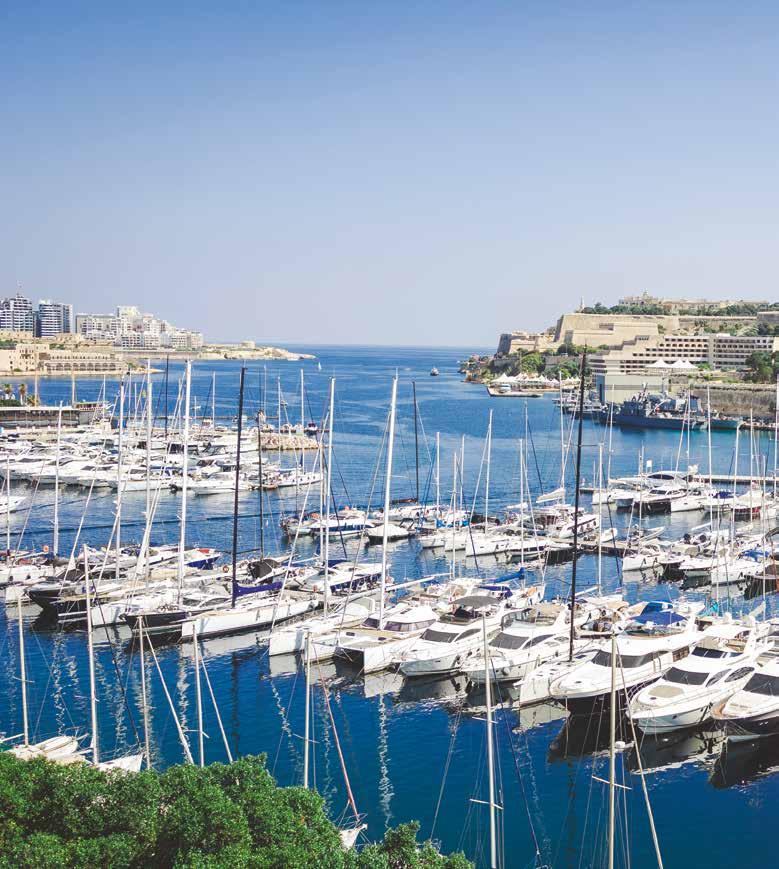
054 DISCOVER MALTA –A DYNAMIC BUSINESS AND FINANCIAL EUROPEAN HUB
INVESTING IN MALTA GUIDE
Marina di Valletta. Photo: Inigo Taylor
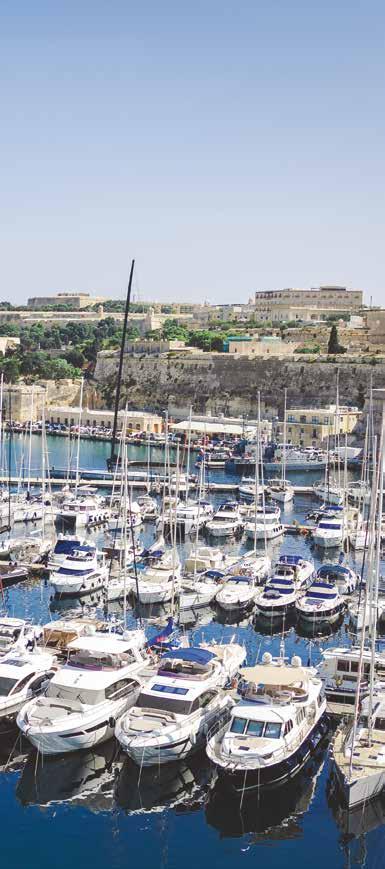
Since it joined the European Union two decades ago and its subsequent adoption of the euro, Malta has emerged as a magnet for international investment.
The country has transformed into a transcontinental trade hub, a renowned tourist hotspot and a leading player in lucrative sectors like advanced manufacturing, aviation maintenance, financial services, iGaming, cryptocurrency, shipping, and emerging technologies such as Artificial Intelligence. This rapid development has lured a wave of expatriates, infusing the social and economic scene with vibrancy, diversity and cosmopolitan flair. Are you ready to become part of this dynamic landscape?
Whether you seek a fresh start or aim to expand your business horizons, Malta beckons as a promising gateway. Before you take the plunge, here’s what you need to know.
ABOUT MALTA
Population
542,051
According to the latest figures published by the National Statistics Office
Area
316 km2
Currency
Euro
Forecast GDP Growth 4.4 per cent in 2024
Compared to 2023, according to the Central Bank of Malta
Unemployment Rate 3.2 per cent
As at February 2024, according to the National Statistics Office
055
ALL ABOUT SETTING UP A BUSINESS IN MALTA
With a well-established regulatory environment based on EU law, a favourable tax regime, generous Government incentives, and a well-educated and highly motivated workforce, Malta can be a very attractive place for a foreigner to set up a business. Doing business in Malta does not only mean access to trade in the EU, but also gaining access to Africa and the Middle East, as Malta has developed healthy business ties and beneficial fiscal agreements with various countries in these two regions too. For those who wish to start a business in Malta, there are seven stages to keep in mind:
1. SELF-EMPLOYMENT VS SETTING UP A LIMITED LIABILITY COMPANY
A limited liability company gives your business a more trusted face and protects you as a shareholder in case of defective products or lawsuits. On the other hand, there are more bureaucratic steps to follow when creating such a company (as opposed to starting a business as a selfemployed person), including undergoing an annual audit, so make sure your business is viable before registering it as LTD. You need to be at least two shareholders to register a company.
2.
PREPARING FOR REGISTRATION
If you are going to proceed with a limited liability company, then you need to draft the company’s memorandum and articles of association. These documents are necessary for registration purposes, but they also detail what the company, its shareholders and its directors can and cannot do. It is important to identify the right legal firm, accountancy and audit firms, as well as business consultants to guide you during this stage.
3.
DEPOSITING THE MINIMUM SHARE CAPITAL
Every company needs some capital to start off, however small. As a new business owner, you need to open a bank account in the company’s name and inform the bank that you are depositing your share capital. The money will go into a holding account until the company is properly registered. The receipt issued will have to be presented in the next stage.
4.
PRESENTING DOCUMENTATION TO THE MALTA BUSINESS REGISTRY
The filled-in company registration form, together with the memorandum and articles of association and the share capital deposit slip must be presented to the Malta Business Registry. Registration is done within two to three days and the registration fee depends on the size of the company.
5.
OBTAINING LICENCES AND A TAX IDENTIFICATION NUMBER

Once the trade name is approved and the memorandum and articles of association are filed with the Malta Business Registry, the company is almost ready to start operating. However, before that, one must also check if any special licences are required. Furthermore, each business in Malta must have a tax identification number. While this is free of charge to obtain, once a year you will need to fill in a tax return form. This is another step where the assistance of a trusted accountant, audit or legal firm is invaluable.
6.
GETTING A VAT NUMBER AND PE NUMBER
You also need to register with the VAT Department to obtain a VAT number. Furthermore, if you have a limited liability company and you intend on hiring personnel, you must register as an employer and obtain a PE number. Both steps are free of charge and can be carried out online.
7.
REGISTERING WITH JOBSPLUS
Jobsplus is responsible for all employment registration in Malta. You have to fill in a form for each employee upon registration, and again upon termination of each employee. The process is quick and free of charge.
Government department Business First can help you with all of these steps, and can be easily reached through their website, www.businessfirst.com.mt, or over email.
INVESTING IN MALTA GUIDE 056
The Quad. Photo: Inigo Taylor



FINDING THE IDEAL PROPERTY
Once the decision to relocate to Malta is made, the next step is securing the perfect property for your family or the ideal headquarters for your business. But what does this process entail?
• Most start their search through a property agency, of which there are countless ones on the island. Some specialise in commercial properties, others in residential. It’s worth noting that many properties are listed with several estate agents, so you may end up viewing the same property several times if you’re not careful.
• Once you’ve viewed a few different properties, settled on one that you want to buy, and your offer has been accepted, you will be asked to sign a promise of sale, known in Maltese as a konvenju. This is a legally binding agreement between you and the seller, and will involve a notary public.
• At this point you are obliged to pay 1 per cent of the 5 per cent provisional stamp duty. The total sum is payable upon completion of the sale. You will also need to pay a deposit which is usually around 10 per cent of the agreed sale price.
• You don’t need a permit to buy a house here unless it’s a secondary residence. But if you are not a citizen of an EU country, then you will need an Acquisition of Immovable Property in Malta by Non-Residents Permit (AIP).
• You must also obtain a permit if you are considering renting your property as a holiday home, and any earnings must be declared to the authorities for tax purposes.
059
INVESTING IN MALTA GUIDE
Valletta. Photo: Inigo Taylor
SPOTLIGHT ON EMERGING ECONOMIC SECTORS
In recent years, Malta has established itself as a prime destination for several tech companies looking for a secure, reliable and reputable jurisdiction to base themselves in, drawing companies from a wide spectrum of digital and innovative sectors, ranging from blockchain to FinTech to Artificial Intelligence.
The nature of the country’s economy has indeed positioned it at the forefront of digital finance innovations, fuelled by proactive responses to emerging needs and supportive governmental policies. Notably, Malta pioneered dedicated frameworks for Distributed Ledger Technology (DLT) and launched its first national strategy for Artificial Intelligence in 2023, underlining its commitment to staying ahead in these fields.
The Malta Financial Services Authority (MFSA) further bolsters investor appeal with its regulatory sandbox for testing innovative business models. The nation’s investment appeal is complemented by a robust human capital pool, nurtured through strategic investments in specialised education, particularly in machine learning and finance-related disciplines. Malta’s digital infrastructure stands out globally, with ongoing initiatives ensuring toptier connectivity, offering investors reassurance for their projects’ scalability and sustainability.
The Malta Digital Innovation Authority (MDIA), launched in 2018, pioneered global regulation of blockchain, Initial Coin Offerings (ICOs) and virtual currencies. Tasked with certifying DLT platforms and smart contracts, it collaborates with the MFSA, which licenses and supervises virtual financial assets exchanges, ensuring consumer protection and market integrity.
The MDIA was established when Malta passed the Virtual Financial Assets Act, making it the first jurisdiction to license crypto operators. The EU’s subsequent landmark legislative package for the industry, that came into force
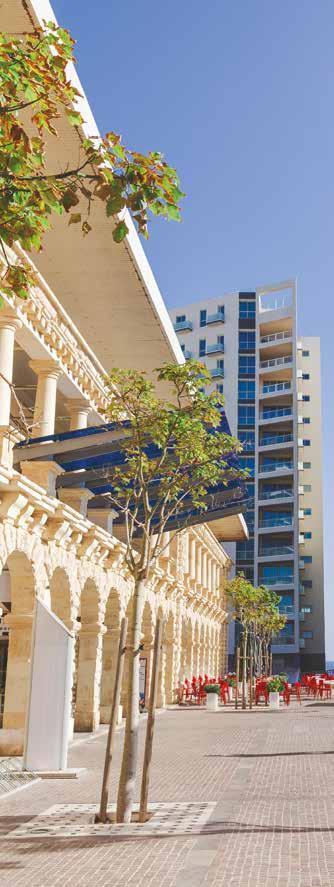
060
INVESTING IN MALTA GUIDE
Tigné. Photo: Inigo Taylor

in mid 2023, draws extensive inspiration from Malta’s framework. This ensured that crypto operators based in Malta faced minimal additional compliance requirements under the bloc’s new rules.
Evolving with global trends, the MDIA now drives Malta’s quest to excel in AI, fostering innovation without stifling it, and supporting individuals and organisations in mastering and utilising AI technologies.
Meanwhile, local businesses are starting to make use of AI to trim costs, such as having a chatbot as the first point of contact for customer queries. If you’ve got a healthy risk appetite, investing in AI in Malta in these early stages could ultimately yield excellent results, before competition begins to grow. If you would like to get a better feel for the industry and the network of people within it, keep an eye out for conferences and events on AI that typically take place in Malta between September and November.
The regulatory push for all-things digital has made Esports, alongside video game development and extended reality, additional niche areas offering interesting investment opportunities. The number of skilled software developers, graphic designers and IT proficient workers makes Malta an attractive option for investors. And with an exciting enough project, it should not be difficult to find skilled workers to fill the roles.
With the global Esports industry projected to reach a global audience of 64.8 million people by 2025, according to Statista, a global provider of market and consumer data, it’s no surprise that Malta has opened its doors to Esports companies just as it did with gaming. While still a budding industry locally, Government’s commitment through ‘Malta’s Vision for Video Games Development and Esports’, launched in May 2019, will help propel this sector forward, with plans to grow it from 0.1 per cent to 1 per cent of the islands’ GDP in 10 years.
Tying all this together is the Maltese Government’s plan and commitment to transform the country’s economy into a digital one in the coming years, enhancing ICT policy development and implementation that is intended to meet the expectations of citizens, civil society and businesses –and its efforts are paying off.
061
INVESTING IN MALTA GUIDE
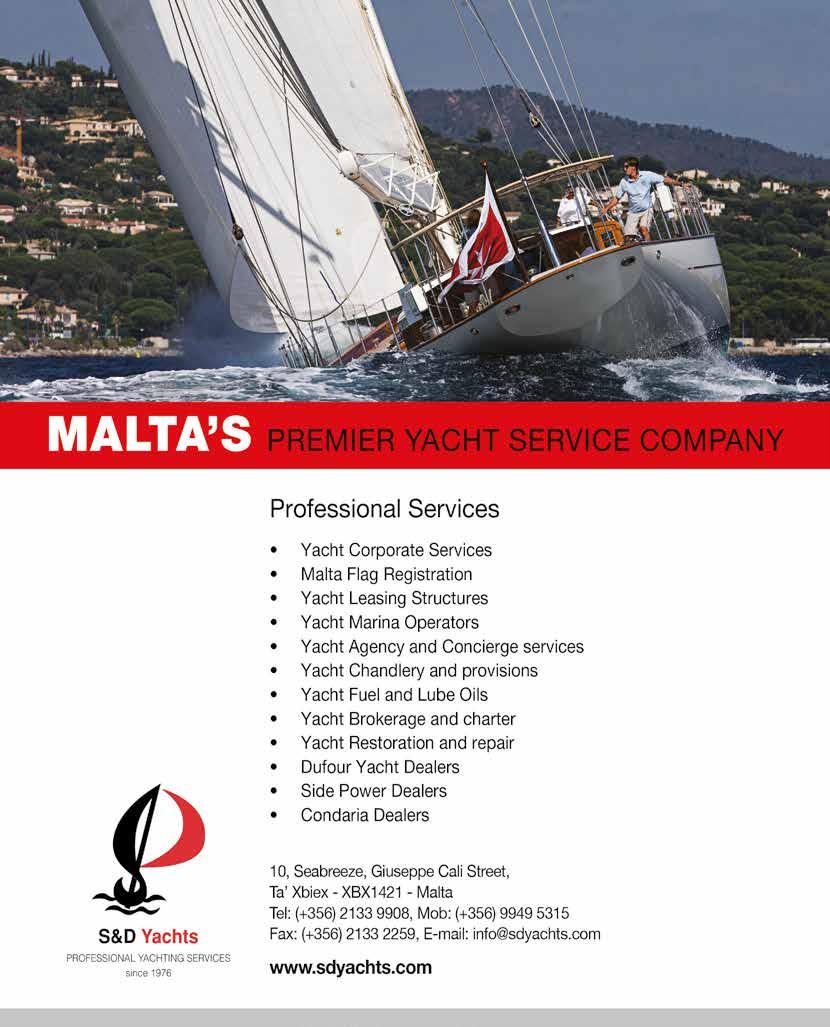



THE HOTTEST NEW STYLES OF THE SEASON – PEACH, BIG BAGS AND SHORT SHORTS!
REBECCA ANASTASI gets the lowdown on this spring season’s sizzling trends and style advice with fashion dynamos CAROLINE PARIS, MALCOLM GAUCI and CARINA CAMILLERI.
FASHION
063
Caroline Paris
Malcolm Gauci. Photo: Gary Bugeja
Carina Camilleri. Photo: Kurt Paris
The birds are chirping, the sea is getting warmer and it’s time to put away those thick coats. Spring is (finally) here! That may bring a sense of trepidation as we start to get ready for bearing a lot more than we’d like to in the months ahead. However, it can also herald the opportunity for experimentation with colour, shape and structure.
Indeed, for fashion consultant and content creator, Caroline Paris, personal style – whatever the season – must “feel authentic to you and your personality.” She recommends trying on “different combinations to get a feel of what looks good on you and what you can wear with confidence.” Caroline knows a thing or two about finding the right outfit for the occasion – she’s worked in the industry, both locally and internationally, for over 10 years, and she believes that anyone can fall in love with fashion.
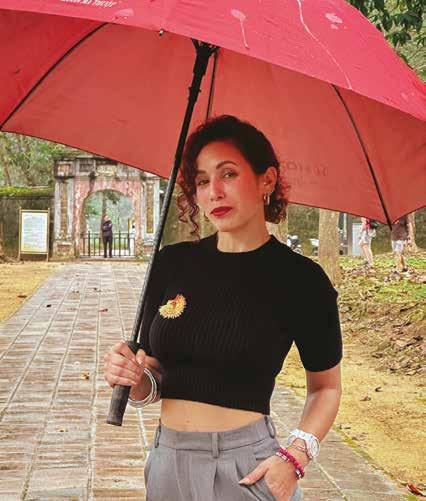
“There are, perhaps, people who just haven’t been exposed to the magic the art of style has to offer,” she smiles, adding that creativity is at the heart of fashion. This season, denim on denim is set to take
centre stage paired as “coordinated washes that look like a set”. She acknowledges that the perfect jean can be hard to find, but she insists that, this spring, there are “a number of options which play out – wide legs are still omnipresent but skinny legs are starting to look like they could make the start of a comeback,” she says, much to the relief of many of us who just couldn’t part with our Y2K legs.
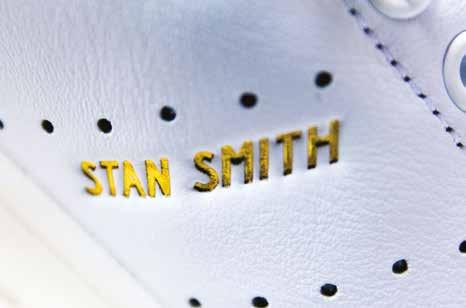
We continue to see sneakers play a big part and old favourites like the Adidas Stan Smiths are expected to make a splash.
CAROLINE PARIS
FASHION 064
Photo: Unsplash
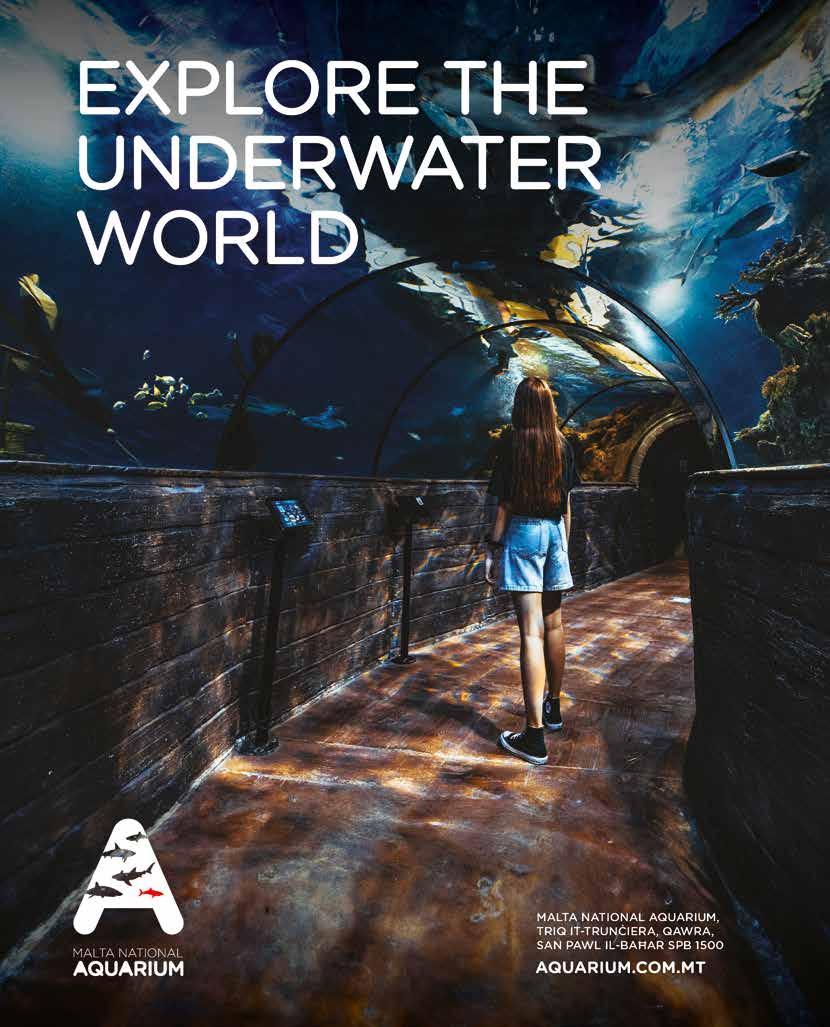
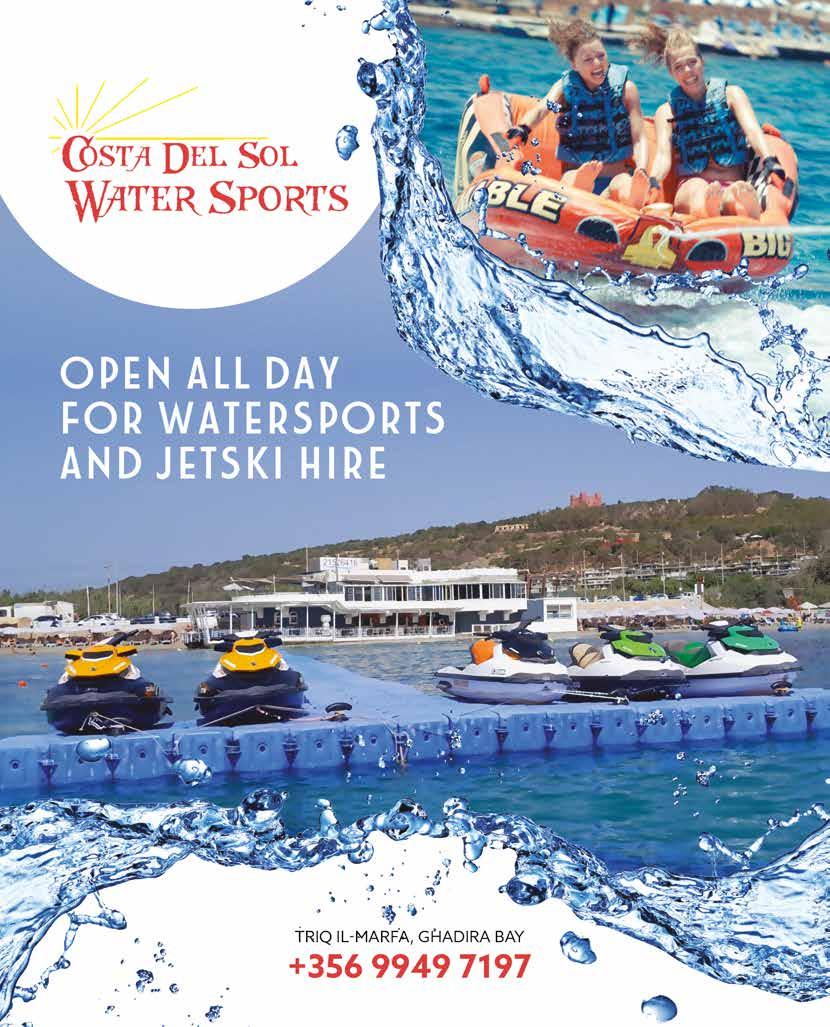
 Photo: Monse
Photo: Monse

reworked in similar or totally different ways. This year, it’s very much a look back to all things ‘90s and we see this in many other places, such as songs trending on TikTok and shows launching on Netflix.”
High-rise trousers will also dominate, with some styles even incorporating corsets around the waist, she explains. For the braver of us, short shorts “dominated fashion week,” she says. “They’re definitely not everyone’s cup of tea but, if you feel confident pulling them off, they can look fantastic paired with a blazer.” In terms of colour, peach is the pantone of the season – “it’s not always an easy colour to play off against Mediterranean skin but can be paired with higher contrast colours to come alive.” Moreover, the white dress remains “a big player this summer especially in sheer fabrics – just don’t wear it to someone’s wedding!” she warns.
Homing in on the accessories du jour, “we continue to see sneakers play a big part and old favourites like the Adidas Stan Smiths are expected to make a splash. Ballet slippers are more prominent than ever with pointed options a winner for when comfort and style need to intersect. On the less sensible end of the spectrum, enormous platforms are also in trend,” she describes.
Fashion movements are always a mix of new and old ideas, she continues, and she’s fascinated when she sees items “I might have worn 15 years ago being
Fashion stylist, Malcolm Gauci, concurs, saying that, this season, his top three trends are “the return of the short shorts, whites and of course, metallics. From runways to street style, these elements are making a bold statement, offering a refreshing take on summer attire. Short shorts are making a comeback with their playful and youthful vibe, perfect for embracing the warmer weather. Meanwhile, the timeless elegance of whites adds a touch of sophistication to any ensemble, providing a versatile canvas for both casual and formal looks. Adding a futuristic twist, metallics are shining bright, injecting a dose of glamour into wardrobes with their eye-catching sheen.”
He also points to the shift in accessory trends, from the tiny bags which once dominated, to the resurgence of big bags (had they ever really gone away?) – as many of us who stuff everything but the kitchen sink

FASHION
067
Photo: Unsplash
Reiss
Larger bags are reclaiming their spotlight, offering ample space for everyday essentials while making a bold fashion statement.
MALCOLM GAUCI
in their totes will be relieved to know. “Practicality has taken precedence,” Malcolm says, and, so, “larger bags are reclaiming their spotlight, offering ample space for everyday essentials while making a bold fashion statement.” However, some trends remain unchanged, he continues, pointing to the ubiquity of platform shoes which “reign supreme just as in previous seasons.”
Yet, despite our urge to buy and to, perhaps, indulge in something which fits in with the sharpest trends of the season, he appeals to our sense of responsibility, insisting that sustainable fashion will keep leading the way, as technological progress continues to become more sophisticated. “Novel production techniques and digital resources are facilitating eco-conscious practices and improving visibility within the supply


Furla
chain,” he explains. These new approaches are bound to change the way we look and purchase in the long term.
Stylist, Carina Camilleri, the founder of local modelling agency, Models M., also points to this shift. “Over recent years it has been evident that trends tend to resurface every season. But now we’re seeing a transformation in the introduction of new, innovative and sustainable fabrics.” Indeed, this season will marry our craving for the au courant with a sense of conscientiousness, but there will be a focus on “bold colours, pencil skirts and shorts,” promising “an exciting, fashionable season to which to look forward!”
Sportswear is also set to further entrench itself into our hearts. “With so many of us taking work-outs seriously, for more reasons than one, it’s inevitable that sportswear has been seen in almost every collection,” Carina says. But there are ways in which to update the trends: “the classic staple polo T-shirt is to be paired with knee-length skirts, shorts and,
068 FASHION
Photo: Gary Bugeja

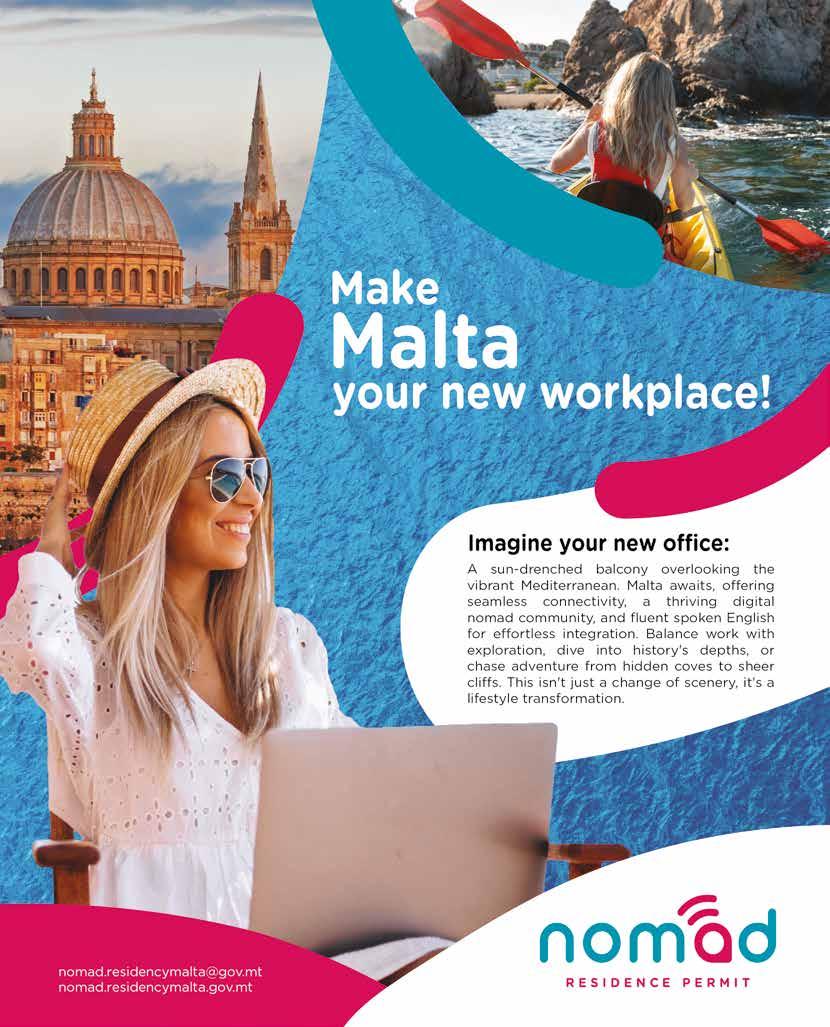
for a more polished look, a tailored oversized blazer.” Ferragamo, she continues, has led the way with this, “showcasing a slightly more formal way to wear the trend.”
White dresses will remain timeless – “wear with an oversized blazer till the weather gets warmer and flat shoes,” Carina advises. She also points to the short shorts, but for those who are not so confident, knee-length numbers have also been seen on the catwalk, having been featured on the runway at the Tom Ford and Gucci fashion shows. Make sure to “wear with an oversize fine knitwear or a white shirt – or both,” Carina says.
“The classic staple pencil skirt is also back with options from Saint Laurent, Tom Ford and Gucci leading the way. This season, this classic is more playful and less prim,” the stylist explains, advising us to wear with a vest or hoodie to update and modernise the look. Colours will also dominate: “from bright yellow to Bauhaus blue and bright coral, you can wear these tones together, with matching shoes and bag.”
Last but not least, the clutch bag – which is “potentially, not very practical” – is back for daywear. However, over and above your


Over recent years it has been evident that trends tend to resurface every season. But now we’re seeing a transformation in the introduction of new, innovative and sustainable fabrics.
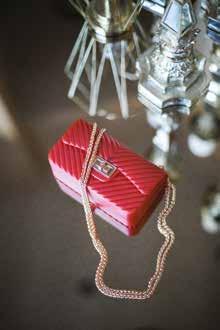
CARINA CAMILLERI
threads, it’s the details which count as we head into the warmer months. “Make sure to get your pedicures booked as toes will be on show – even summer boots have toes exposed as seen at VB (Victoria Beckham) and Versace. We are spoilt for choice this season with shoes varying from platform wedges as seen at Gucci; flats and kitten heels as seen at Prada; and the ubiquitous high knife heel. But, if you are after a show-stopper shoe, look no further than Balenciaga’s satin bow pumps or Maison Margiela feather-embellished mules,” she explains, concluding.
071
FASHION
Photo:
Unsplash
Photo: Tom Ford
ART & CULTURE

TO FOLLOW YOUR ART
At just 35, MANUEL FARRUGIA has emerged as one of Malta’s brightest artistic talents. DEAN MUSCAT speaks with the Gozitan artist, tracing his journey from humble beginnings to prestigious commissions for notable churches and prominent figures.
072
Painting of murdered migrant Lassana Cisse at St George’s Basilica, Rabat, Gozo. Photos: Max Xuereb

Not every artist discovers their calling early on. Some stumble upon it unexpectedly, through a workshop they take on a lark or a chance encounter with a great piece of art that speaks to their soul. For others, there comes a gradual realisation that they possess a unique talent, one that might warrant deeper exploration. But then there are a select few for whom the artist’s path is almost predestined. Divine intervention or genetic coding, call it what you like, but for these special, dare-say lucky few, a life in the arts seems undeniable from the start.

Speaking with Gozitan artist Manuel Farrugia, you can’t help but sense the latter applies to him. It’s not as if he emerged fully formed from the get-go. Dedication, graft and countless hours of practice have refined him into one of Malta’s premier painters in the naturalistic style. Yet, as he acknowledges, there was never a eureka moment in his journey. The desire to be an artist has been ingrained in him for as long as he can remember. The subsequent years have simply been a process of moulding his life so he can freely pursue his passion with purpose.
Growing up in Rabat, Gozo, a young Manuel didn’t come from particularly artistic stock. His parents and siblings showed no major inclination toward the arts, yet the 35-year-old hints at more distant relatives who may have wielded brushes before him.
“I actually started off with clay sculptures, creating little models of animals, cars and saints. It was my aunt who suggested I try my hand at painting. Taking her advice, I bought some acrylics and began my early paintings. My parents were also incredibly supportive when they saw how invested I was in my art and continued to encourage me. I’d find inspiration from the people
073

around Pjazza San Frangisk, observing their facial expressions and characters. I’d go home and try to paint them,” he recalls fondly, going on to explain he has always leaned towards painting the human figure, which gives him a deeper satisfaction in expressing himself through this form.
Then during secondary school, Manuel had the chance to opt for art as a main subject. It was during this period that his artistic skills truly flourished. “I would paint every day. Once I got home, I’d just sit down in my room and get lost in painting for hours. It was never a chore like studying, but was just pure enjoyment for me,” he reflects.
As he approached higher education, he was resolute in his decision to enrol at the School of Art. However, his parents initially expressed concern. “Understandably, my parents worried about my future in art. Malta has never had a thriving art scene, and the only apparent career path seemed to be teaching. But I was adamant about my choice,” he says. “It took some convincing, but once they understood just how passionate I was about this, I think they relented a little, and I haven’t looked back since.”
Over the next five years of studying history of art and refining his skills, Manuel also secured a vital apprenticeship with fellow Gozitan artist Pawl Carbonaro. Reflecting on
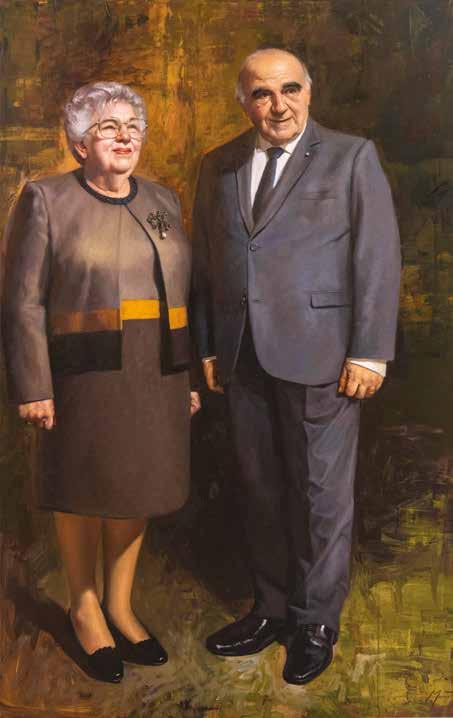
[During secondary school] I would paint every day. Once I got home, I’d just sit down in my room and get lost in painting for hours.
075 ART & CULTURE
Portrait of former President George Vella and his wife at San Anton Palace, Attard
these formative years in his professional development, Manuel says: “these remain some of my fondest memories, as I was living and breathing art. I’d head to Pawl’s studio in the morning and then attend school in the evenings. In summer, we would sometimes head down for a swim, then go back to work, painting for hours on end. It was a huge honour for me to be accepted as Pawl’s apprentice. I learnt a lot from him, and we remain close friends until today.”
At the same time, the budding artist began to attract a devoted niche clientele of his own. Word-ofmouth began to spread, and one connection led to another, soon finding himself with a steady stream of commissions coming his way. Initially, local parishes and band clubs sought his paintings for their festi. As he showcased his talent and skill, larger projects began to trickle in. He was entrusted with creating pieces for prominent churches across Malta and Gozo, including the main apse at Christ the King parish church in Paola. Remarkably, he completed this, one of the largest canvas paintings in all of Malta, at just 29 years old.

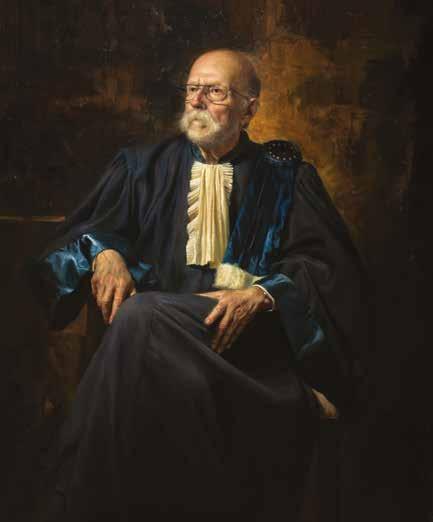
Since then, he has been sought after for special portrait commissions of notable figures, spanning from influential business leaders and church dignitaries to an official portrait and bust of President George Vella, both displayed at San Anton Palace in Attard. With each commission, clients have placed increasing trust in Manuel’s vision, granting him greater liberty to render their portraits or paintings in his increasingly distinctive style.
Arguably, Manuel’s most notable work has also, unwittingly, been his most controversial. His poignant painting of Lassana Cisse at St George’s Basilica in Rabat, Gozo, commemorates the 42-year-old migrant worker from the Ivory Coast, who tragically lost his life in a racially motivated shooting in Ħal Far. The piece is part of a series depicting the Acts of Mercy, particularly the New Testament quote ‘I was a stranger and you welcomed me’. In the painting, Lassana is embraced by a priest on one side, while on the other, a bystander holding a smartphone symbolises the influence and role of social media in shaping public opinion when news of his death emerged.
076 ART & CULTURE
Portrait of Judge Giovanni Bonello, part of the collection of portraits exhibited at Casino Maltese, Valletta

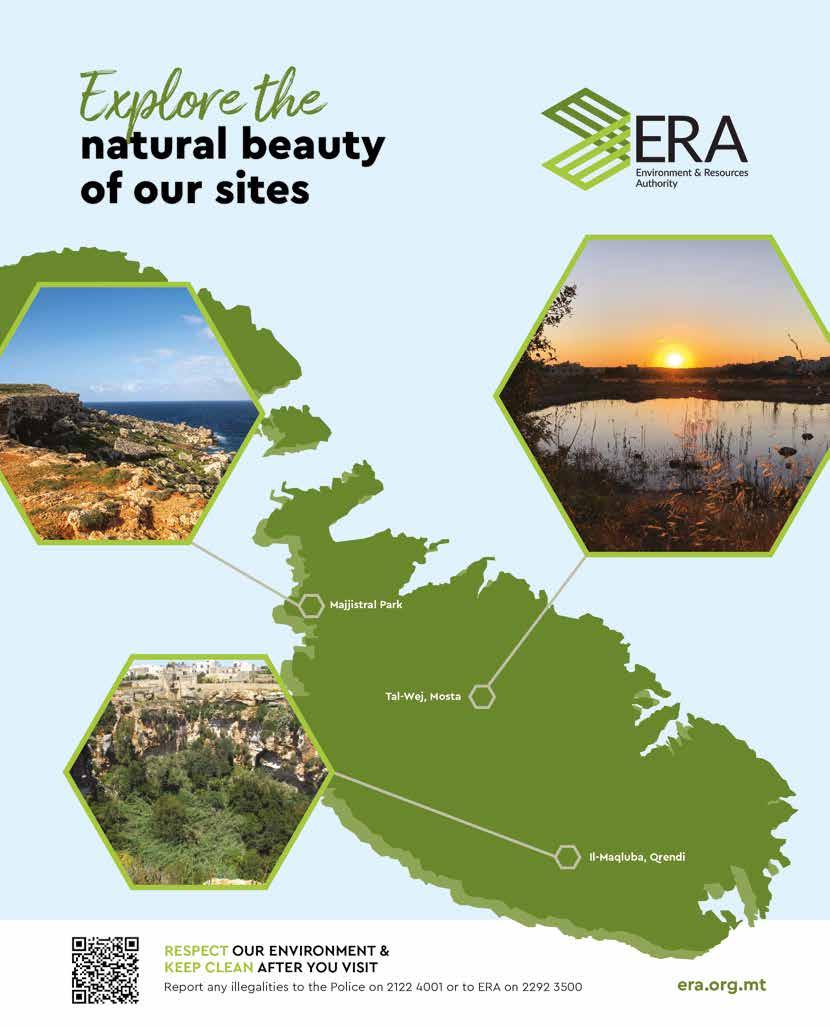
At the start of my career, I started with more classical techniques, but over time, I’ve incorporated more contemporary elements into my style.
When the painting was unveiled, it garnered both admiration and ire from certain quarters of the public. “I remember a news segment about the paintings airing on the national TV station at the time, and suddenly there was this bombardment of comments and backlash on Facebook,” Manuel recollects. “Some felt that the inclusion of a migrant figure in a local church was a step too far. I was taken aback, as fundamentally, through these paintings, we purposefully blended religious symbolism with modern themes to highlight the enduring relevance of Jesus’ teachings. Looking back, I feel this incident really highlights that art can still spark discussion and debate. Overall, I’ve come to see that most people were supportive, and the painting conveyed its intended message effectively.”
With a packed schedule ahead, including local and international commissions and an upcoming project in a Sicilian church – details to be revealed soon – Manuel confesses that at heart, he remains as passionate about his craft as he’s ever been.
“Beyond my commissioned work, I make it a point to dedicate time for personal projects,” he explains. “It’s essential for me to have that creative freedom, to paint and sculpt stories and subjects that genuinely interest me. It also helps me evolve. At the start of my career, I started with more classical techniques, but over time, I’ve incorporated more contemporary elements into my style.” Reflecting on what the future may hold, he adds, “I never stop dreaming, so I believe there’s still plenty more to come.”
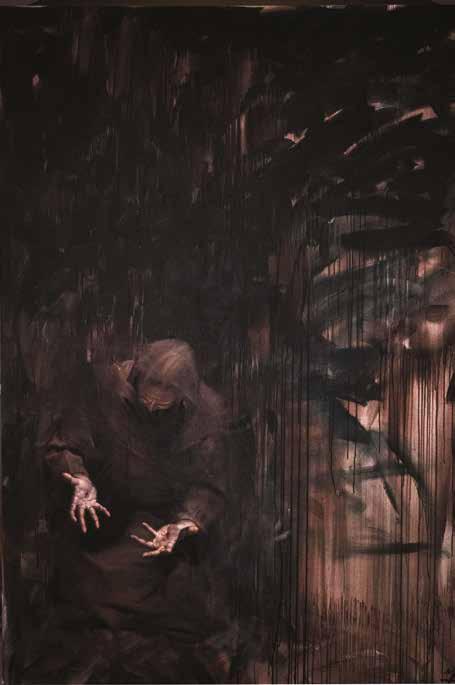
079 ART & CULTURE

Travel Made Easy
San Pawl il-Baħar
Il-Wardija
Bus routes only summer
Number of bus route
Place of departure/arrival
Key bus stop
Sales and information office
Bus interchange
Tourist information
Heritage site
Place of interest
Airport
Pembroke (St Julian’s) (St
In-Naxxar
Il-Mosta Ħal Għargħur
L-Iklin
L-Imtarfa
L-Imdina
Ir-Rabat
Ħal Balzan Ħ’Attard Birkirkara
Ħal Qormi
Ħaż-Żebbuġ
Is-Swieqi
San Ġiljan
Il-Gżira San Ġwann Ħad-Dingli
L-Imsida Tal-Pietà Il-Marsa
Tas-Sliema
Ix-Xatt ta´ Tax-Xbiex
IL-BAĦAR MEDITERRAN (MEDITERRANEAN
Il-Belt VALLETTA
Il-Birgu (Vittoriosa) L-Isla (Senglea) Il-Kalkara Ix-Xgħajra
Bormla (Cospicua)
Raħal Ġdid (Paola)
Ħaż-Żabbar Il-Fgura
Ħal Tarxien
Ħal Luqa
Is-Siġġiewi
L-Imqabba
Il-Qrendi
Bajjada
Ħal Kirkop
Ħal Safi
Iż-Żurrieq
Santa Luċija
Ħal Għaxaq Il-Gudja
Marsaxlokk Iż-Żejtun
Marsaskala (Wied il-Għajn)
Birżebbuġa
Delimara
Dive Site 1
Hospital
Ferry
Blue Flag Beach
Sandy Beach
Rocky Beach
323 301,N301TD30, TD31 301,N301,303 302,322 302,303 303 303 305 305,306 307 308,311,312 308 309 310,TD31 310 311 313 310 322 322 323 302,323 306,330 307 311 312 313 330 306 309 308 307 322 310 301 302 302 303 303 323 322 305 308 312 312 323 TD30 TD30 TD31 N301 Xlendi Bay Dwejra Bay Ġgan ija Temples Marsalforn Bay Ramla Bay St. Mary‘s Tower; Comino Tower Chapel of our Return from Egypt L-Imġarr Ferry Basi ica Ta`Pinu Għarb Fo k ore Museum Qol a l-Bajda Battery Tas Salva ur Monument Be ancourt Bat ery (ruin) Giordan Ligh house Corpus Christ Parish Church SantaAssunMarija a Church Zjara al-Madonna Dwejra Tower Ta' CraftsDbiegi Vil age St. Lawrence Parish Church X end Tower Tower Tower Knight´s Washhouse Madonna ta`Manresa Chapel St. MargaretParish Church Knight‘s Tower Xewkija Dome St. Ceci ia Tower Ta‘ Kola Windmi Museum Broch orff Stonecirc e Marija Bambina Basi ica Kenuna Tower Borġ Għarib Sacred Heart of Jesus Church St. Per er & St. Paul Basi ica O d Windmi St. An hony of Padua Church Res ored Windmill Menhir Immacu ate Concep ion of our Lady and St. Joseph Church Borg l‘ Imramma (Burial mounds), Do men Tower Mġarr x-Xini Tower O d Windmil Tower Ta' Sansuna (Collapsed Dolmen) Pomskizil ious Museum of Toys Sopu Tower Ta‘ Sufa Windmi Citadel San a Marija Assun a Cathedral St. George Basilica St. Francis Church Don Bosco Ora ory Museum of Archeology Gozo General Hospi al Fort Chambray Madonna Basial-Patrocinju ica St Comino Santa Blue Lagoon F e r r y t o Ċ i r k ewwa Ħondoq-ir Rummien Bay Mġarr ix-Xini Daħlet Qorrot Bay San Blas Bay Qbajjar Bay Xwieni Bay Wied il-Għasri San Dimitri Point Blue Hole Salt Pans Salt Pans Xerri‘s Grot o Ninu‘s Cave San Dimi ri Chapel Wied il-Mie aħ Karmni Grima Museum Il-Hagar Museum Ke inu Grima Mari ime Museum Panacea Marine In erpretaton Cen re Fast f erry connection BA Ħ A R M E D ITE RR A N (M E D ITE RR A N EA N SEA ) Marsalforn San Lawrenz Il-Qala Ta´Sannat Iż-Żebbuġ L-Ghasri L-Għarb Santa Luċija Ta´Kerċem Għajnsielem Il-Munxar Ix-Xlendi Ir-Rabat (Victoria) L-Imġarr In-Nadur Ix-Xewkija Ix-Xagħra KEMMUNA (COMINO) GĦAWDEX (GOZO) Kemmunett (Cominotto) N301 St. An hony‘s Bat ery Ras il-Qala Bat ery Ta’ Qali Temples Buskett Gardens Ħaġar Qim Temples L-Imnajdra (Mnajdra Temples) Il-Ħnejja (Blue Grotto) Pretty Bay Marsaxlokk Market St Thomas Bay Tarxien Temples Ħal Saflieni Hypogeum St George’s Bay Malta Int. Airport Mater Dei Hospital University Mosta Dome Ħaġar Qim Ta' Qali National Stadium Fort Rinella St Peter’s Pool Xrobb l-Għaġin Mistra Bay 226 233 238 260 280 71 73 72 71,73 117 119 218 117 120 110 124 93 92 91 124 135 119 X4 X3 X1 201 51 204 209 210 213 203 222 225 83 233 202 212 X2 X3 X4 94 3 4 84 85 81 82 109 62 61 63 52 53 106 54 43 14 31 13 212 21 15 1 51,52,53 44, 72 73, 72 15 24 21 31 50,54,56 53 51 52,56, 51 61 61,62 63 X1 X3 X3 X4 92,93 91, 92, 93 94 81, 85 80,82,85,88 84, 85 186 62, 109 109 109 119, 119 120,121 135 120 120,121 124 135 119, 119,135 201 201 201 202 202 47 31 204 206 210 210,226 209 213 X1,X4 X1, X2,X3 238 2 3 103 45 48 186 223 280 221 121 260 46 103 47 203 121 206 80 74 218 117 88 226 64 58 182 202 186 50 181 204 206 209 210 213 218 117 120 122 135 181 182 22 X3 49 56 56 201 181, 181, 182, 64 74 74 73 71 218 218 117 201 117 , 1 3 5 81,84 22680,83, 119,210 X4 119 88,226 206 92,93,94 90,91 204 124 124 135 91 94 213 2,3,4 1 124 13A,14,16 13, 14 14 16 16 16 22 21,110 238 41-49 32 35 203,250,260 280 260 186 202 106 54, 54 133 109 109 74 106 120 X1A X1A 25 35 25, 250 260 103 103 202,203 13A 58 58A 13 106 110 32 31 25 22 X1 X1A X2 X3 X2 X1 X4 61 62 63 64 74 110 120 121 135 204 206 209 210 218 226 TD10 TD2 TD2 TD13 TD13 TD2 TD2,TD 1 1 TD2
Point Beach Dragonara Beach Fond Għadir oria Lines 120 110,121 Ghar Dalam Clapham Junction Romana National Aquarium 24 90 109A X2 Il-Balluta Baħar iċ-Ċagħaq Burmarrad Il-Buskett Ras
Il-Bidnija
Qawra
Ħal Far
Paul’s Bay)
SEA)
Buġibba Il-Qawra Is-Salina Tarġa Gap IL-BAĦAR MEDITERRAN (MEDITERRANEAN SEA) Għar Lapsi Wied iż-Żurrieq Għar Lapsi Buġibba Perched Beach MALTA Legend
Selmunett (St Paul’s Islands)
Bus routes
personal/non-commercial purposes. publictransport.com.mt or 21222000 Date: June 2023 © FREYTAG-BERNDT & ARTARIA KG, VIENNA www.freytagberndt.com 150 203 300 X133 150 300 This map is to be used for personal/non-commercial purposes. Unauthorised reproduction is forbidden. For more information please contact us on publictransport.com.mt or 21222000 Ta’ Qali Mellieħa Bay Popeye Village Golden Bay Għajn Tuffieħa Ġnejna Bay Skorba Temples Ta’ Ħaġrat Dingli Cliffs Buskett Gardens Ħaġar Qim Temples L-Imnajdra (Mnajdra Temples) Il-Ħnejja (Blue Grotto) Pretty Bay Marsaxlokk Market St Thomas Bay Tarxien Temples Ħal Saflieni Hypogeum St George’s Bay L-Armier (Armier Bay) Paradise Bay Ċirkewwa Ferry Malta Int. Airport Mater Dei Hospital University Mosta Dome Il-Ġnejna Ħaġar Qim Ta' Qali National Stadium Fort Rinella Il-Prajjet (Anchor Bay) St Peter’s Pool Xrobb l-Għaġin Fomm ir-Riħ Mistra Bay 226 233 238 260 280 71 73 72 71,73 117 119 218 117 120 110 124 93 92 91 124 135 119 X4 X3 X1 201 51 204 209 210 213 203 221 222 222 225 223 83 233 202 212 X2 X3 X4 94 3 4 84 85 81 82 109 62 61 63 52 53 106 54 43 14 31 13 41 42 X1 44 101 109 212 21 15 1 51,52,53 41,42 101 221222 ,250 X1,X1A 44, 72 73, 72 15 24 21 31 50,54,56 53 51 52,56, 51 61 61,62 63 109,109A X1 X3 X3 X4 101 92,93 91, 92, 93 94 81, 85 80,82,85,88 84, 85 101 186 62, 109 109 109 119, 119 120,121 135 120 120,121 124 135 119, 119,135 201 201 201 202 202 47 31 204 206 210 210,226 209 213 223,225 X1,X4 X1, X2,X3 238 101 2 3 X1A 250 49 225 238 103 45 48 186 223 280 221 121 260 46 103 47 203 121 206 80 74 218 117 88 226 64 58 182 202 186 50 181 56 204 206 209 210 213 218 117 120 122 135 181 182 22 101 44, X3 49 56 56 201 56 181, 181, 182, 64 74 74 73 71 218 218 117 201 117 1 3 5 81,84 22680,83, 119,210 X4 119 88,226 206 92,93,94 90,91 204 124 124 135 91 94 213 2,3,4 1 124 13A,14,16 13, 14 14 16 16 16 22 21,110 238 41-49 32 35 203 250 260 280 260 186 202 106 54, 54 133 109 109 49 49 101 74 106 120 X1A X1A 25 35 25, 250 260 103 103 202,203 13A 58 58A 13 106 110 32 31 25 22 X1 X1A X2 X3 X2 X1 X4 61 62 63 64 74 110 120 121 135 204 206 209 210 218 226 TD10 TD2 TD2 TD13 TD13 TD2 TD2TD 1 1 TD2 Qawra Point Beach Dragonara Beach Fond Għadir Victoria Lines 120 110,121 Ghar Dalam Clapham Junction Domus Romana National Aquarium 109A 24 90 109A X2 Il-Balluta L-Għadira Baħar iċ-Ċagħaq Burmarrad Il-Buskett Ras Bajjada Il-Bidnija Ħal Far Il-Wardija Il-Baħrija Il-Gżira San Ġwann Ħad-Dingli L-Imtarfa L-Imdina Ħal Balzan Ħ’Attard Birkirkara L-Imqabba Ix-Xatt ta´ Tax-Xbiex L-Imsida Tal-Pietà Il-Marsa Raħal Ġdid (Paola) Ħal Luqa Il-Birgu (Vittoriosa) L-Isla (Senglea) Il-Kalkara Ix-Xgħajra Ħaż-Żabbar Il-Fgura Ħal Tarxien Santa Luċija Ħal Għaxaq Il-Gudja Il-Qrendi Ħal Safi Delimara Bormla (Cospicua) Iċ-Ċirkewwa Ħal Kirkop Il-Mellieħa Tas-Sliema L-Imġarr San Pawl il-Baħar Il-Mosta Ħal Għargħur In-Naxxar Is-Swieqi Ir-Rabat Ħal Qormi Ħaż-Żebbuġ Is-Siġġiewi Iż-Żurrieq Birżebbuġa Marsaskala (Wied il-Għajn) Marsaxlokk Iż-Żejtun Il-Belt VALLETTA San Ġiljan Pembroke (St Julian’s) (St Paul’s Bay) L-Iklin IL-BAĦAR MEDITERRAN (MEDITERRANEAN SEA) Selmunett (St Paul’s Islands) Buġibba Il-Qawra Is-Salina Tarġa Gap IL-BAĦAR MEDITERRAN (MEDITERRANEAN SEA) Għar Lapsi Wied iż-Żurrieq Għar Lapsi Buġibba Perched Beach MALTA Legend Bus routes Bus routes only summer Number of bus route Place of departure/arrival Key bus stop Sales and information office Bus interchange Tourist information Heritage site Place of interest Airport Hospital Ferry Blue Flag Beach Sandy Beach Rocky Beach Dive Site 1 N 0 1 2 3 km This map is to be used for personal/non-commercial purposes. Unauthorised reproduction is forbidden. For more information please contact us on publictransport.com.mt or 21222000 Date: June © FREYTAG-BERNDT & ARTARIA KG, VIENNA www.freytagberndt.com 150 203 300 X133 150 300 MALTA TOURISM AUTHORITY TOURIST INFORMATION CENTRES Valletta (Tritoni Fountain) Valletta Cruise Port Malta Internat. Airport Bugibba Marsaxlokk Mellieha Mdina Vittoriosa Mgarr Terminal , Gozo Victoria, Gozo 22915504/5507 22915506 22915508/5513 22915505 22915512 22915511 22915514 22915509 22915516 N
0 1 2 3 km Legend Bus routes Bus routes only summer Number of bus route Place of departure/arrival Key bus stop Sales and information office Bus interchange Tourist information Heritage site Place of interest Airport Hospital Ferry Blue Flag Beach Sandy Beach Rocky Beach Dive Site 1 Museum Church, chapel Cave Windmill Lighthouse Fortress, tower Archeological site 0 1 2 3 km
082
REPUBLIC STREET STRAIT STREET STRAIT STREET OLD BAKERY STREET OLD MINT STREET WEST STREET MARSAMXETT ST GEORGE STREET ST PATRICK STREET ST ZACHARY STREET ORDNANCE STREET SOUTH STREET MELITA STREET MELITA STREET ST JOHN STREET ST MARK STREET GREATSIEGEROAD GIROLAMO CASSAR STREET NELSONSTREET WINDMILL STREET ST LUCIA STREET OLD THEATRE STREET ARCHBISHOP STREET ST CHRISTOPHER STREET ST CHRISTOPHER STREET ST DOMINIC STREET ST NICHOLAS STREET OLD HOSPITAL STREET NORTH STREET ST FREDERICK STREET FOUNTAIN STREET ST SEBASTIAN STREET ST JOSEPH STREET MERCHANTS STREET ST PAUL STREET QUARRY WHARF MEDITERRANEAN STREET ST URSULA STREET BATTERY STREET OLD WELLS STREET STREET ST BARBARA BASTION © Copyright Content House Group 2024 1 Palazzo Preca Restaurant 2 Souvenirs that Don’t Suck 3 Mediterranean Conference Centre 4 St John’s Co-Cathedral 5 Valletta Waterfront
The Lascaris War Rooms 7 Saluting Battery 8 Auberge de Castille 9 Spazju Kreattiv 10 Our Lady of Victory Church 11 MUŻA 12 Pjazza Teatru Rjal 13 Parliament Building 14 National Museum of Archaeology 15 Joseph Busuttil 16 St Paul’s Shipwreck Church 17 National Library 18 St Paul’s Pro-Cathedral 19 Teatru Manoel 20 St George’s Square 21 Grandmaster’s Palace & Armoury 22 Is-Suq tal-Belt 23 Fort St Elmo PLACES OF INTEREST 1 2 3 4 Hastings Garden Upper Barrakka Gardens Lower Barrakka Gardens 5 6 7 8 9 10 11 12 13 14 16 17 18 19 20 22 23 21 15
VALLETTA MAP
6
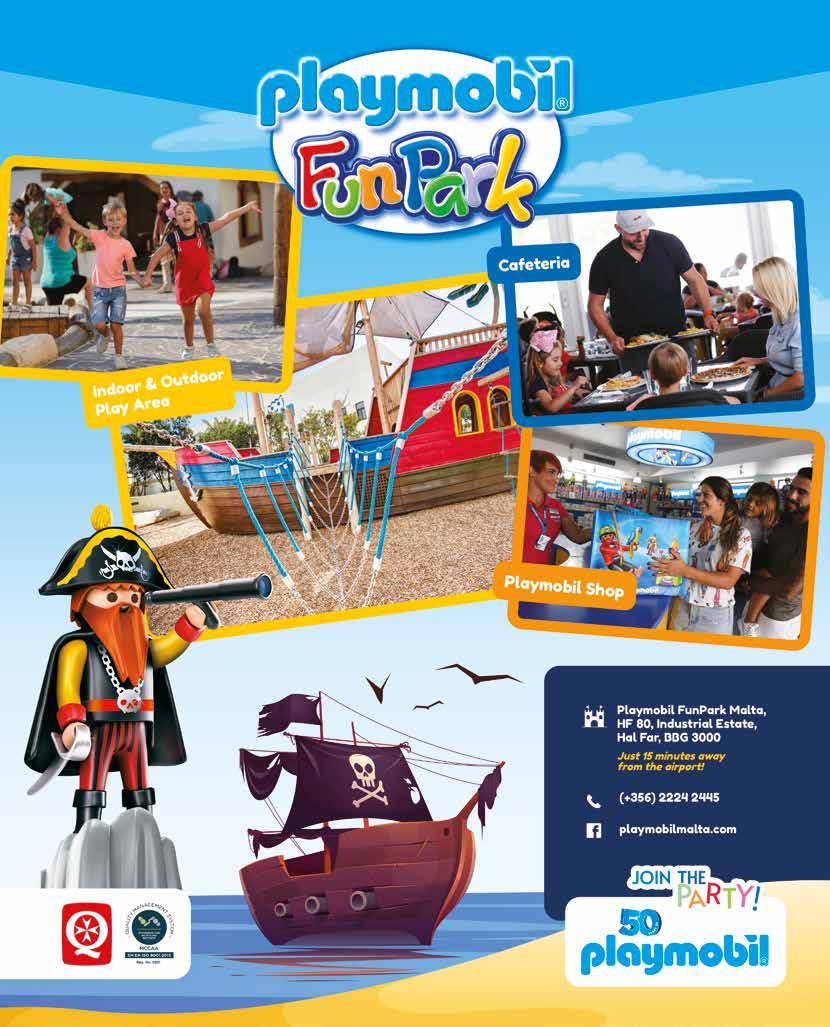






















































































 Photo: Monse
Photo: Monse





















